To Taxco and Beyond: Mainland Mexico by Van
December 26, 2017 to February 25, 2018
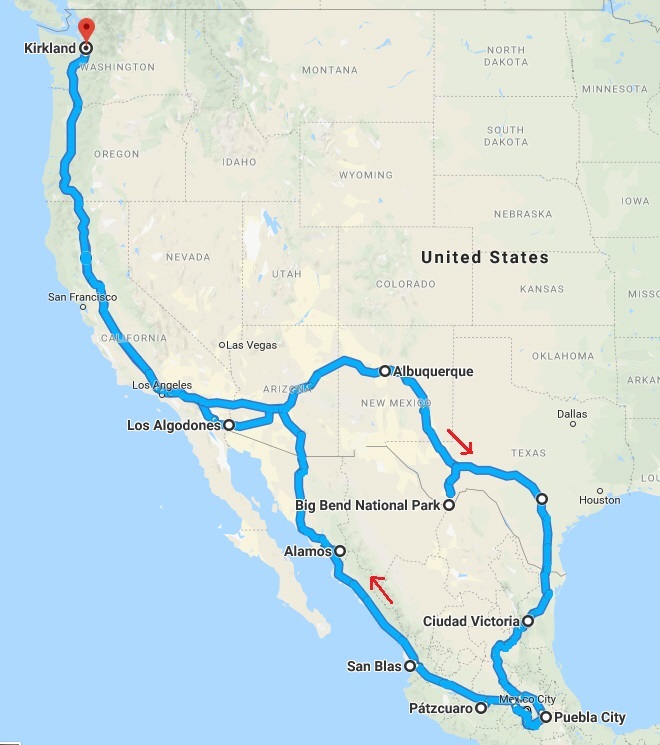
9000 miles and nine weeks (2600 miles and five weeks of that in Mexico).
This blog focuses on the Mexico part of our trip, with just a brief summary of what we did in the States.
Click here to skip directly to Mexico.
Click here to learn more about our van.
Heading South

A rare white Christmas in Seattle was a harbinger of a cold, wet winter to come. Time to head south!
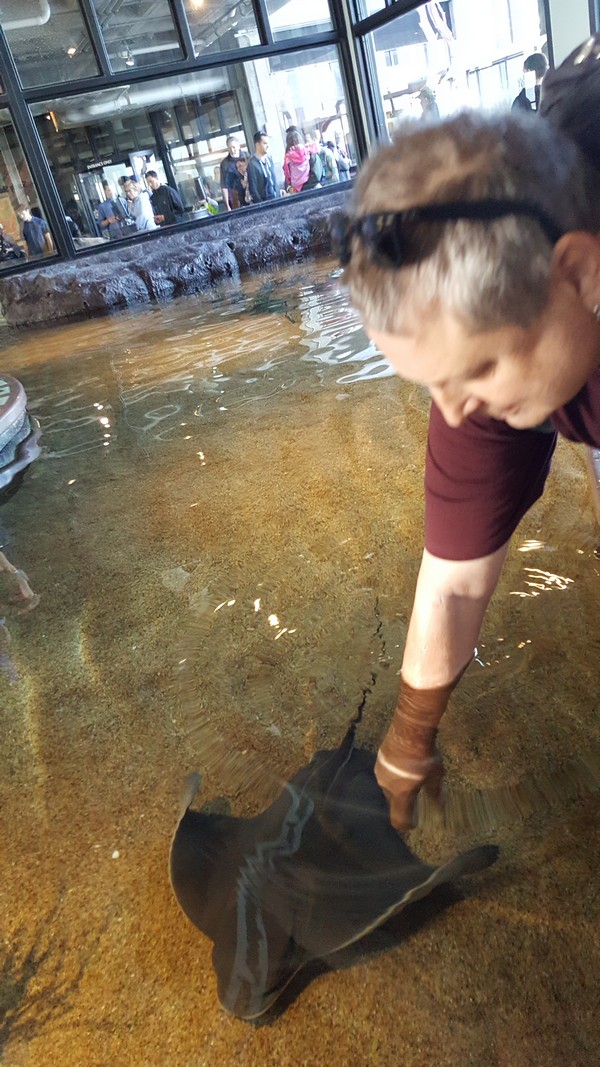
First stop: Monterey Bay Aquarium, where Grant loved petting the silky-soft bat rays.


In Burbank we had a delightful visit with Karen's brother, David, his wife, Annie, and 3-year-old Ava.
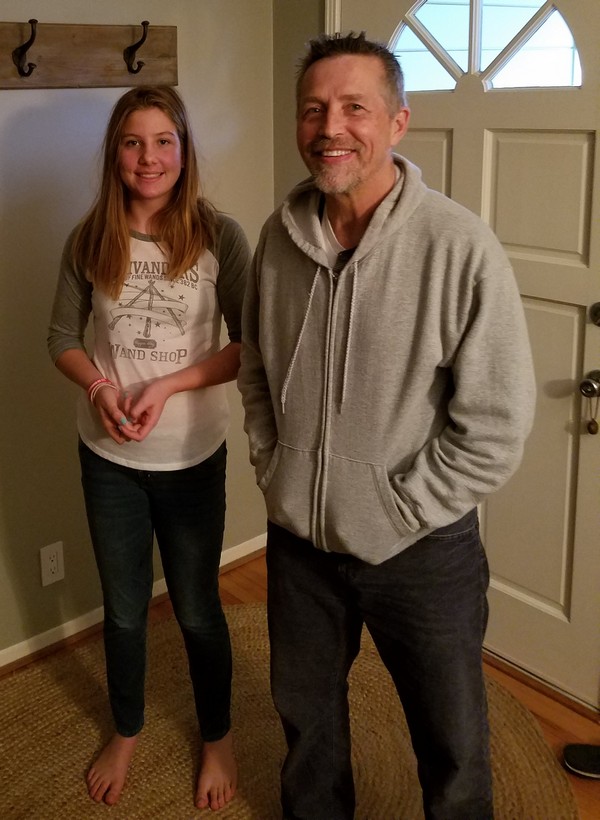
Grant's brother Dan and niece, Julia, in Long Beach, CA (We neglected to get a picture of sister-in-law Kelle!)

We love the giant boulders, Seussian Joshua Trees, and desert stillness in Joshua Tree National Park in Southeastern California.

Hiking with Grant's cousin Gretchen in the tawny hills around Redlands, California (the town is known for its sweet and juicy oranges, mild climate, and Redlands College).
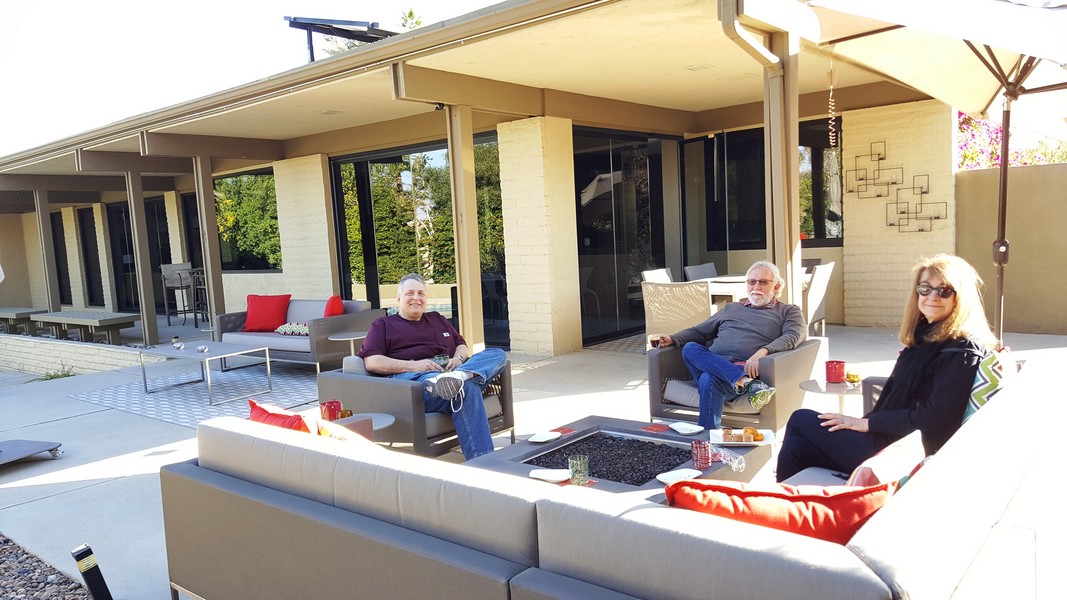
Living the mid-century-modern life in Palm Desert with friends Debbie and David.

After a brief stop for dental work in Los Algodones, Mexico, we visited Karen's stylish snowbird parents in Scottsdale, Arizona. (Her dad is recovering from multiple back surgeries.)

Scottsdale is also home to Karen's brother, Mark, and his wife, Denise. Niece Casey (with boyfriend JD) was home from college for the holidays.
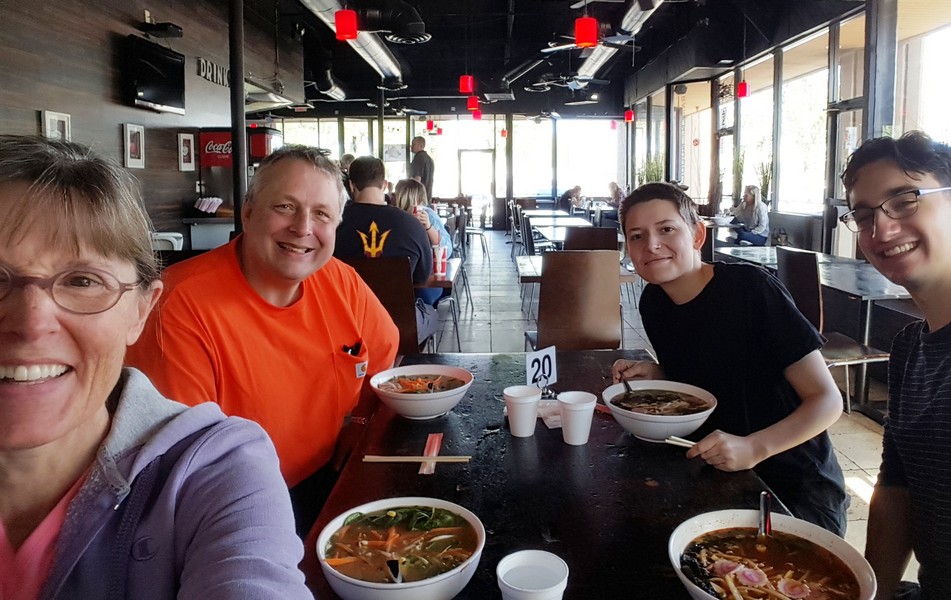
A yummy ramen lunch with Mark's daughter, Emma, and her friend, George, in Tempe.
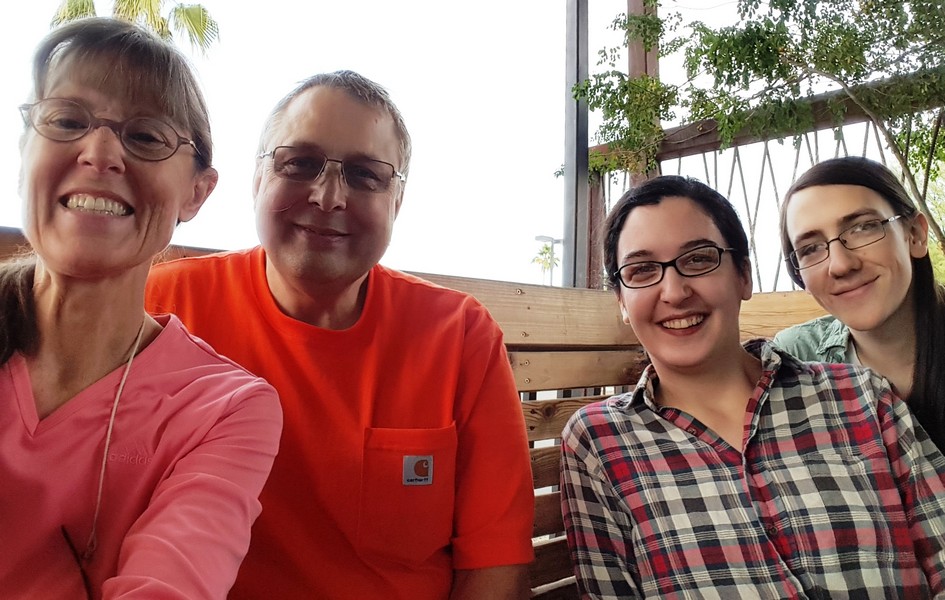
Continuing the social whirlwind, we had coffee with Grant's niece, Sophia, and her boyfriend, Logan, also in Tempe.

We walked every day on Scottsdale's extensive and beautifully-maintained trail network.

In Albuquerque we visited Grant's daughter, Alex, and strolled around the University of New Mexico campus.

Karen drove up to Santa Fe to visit her old high school friend, Jane.
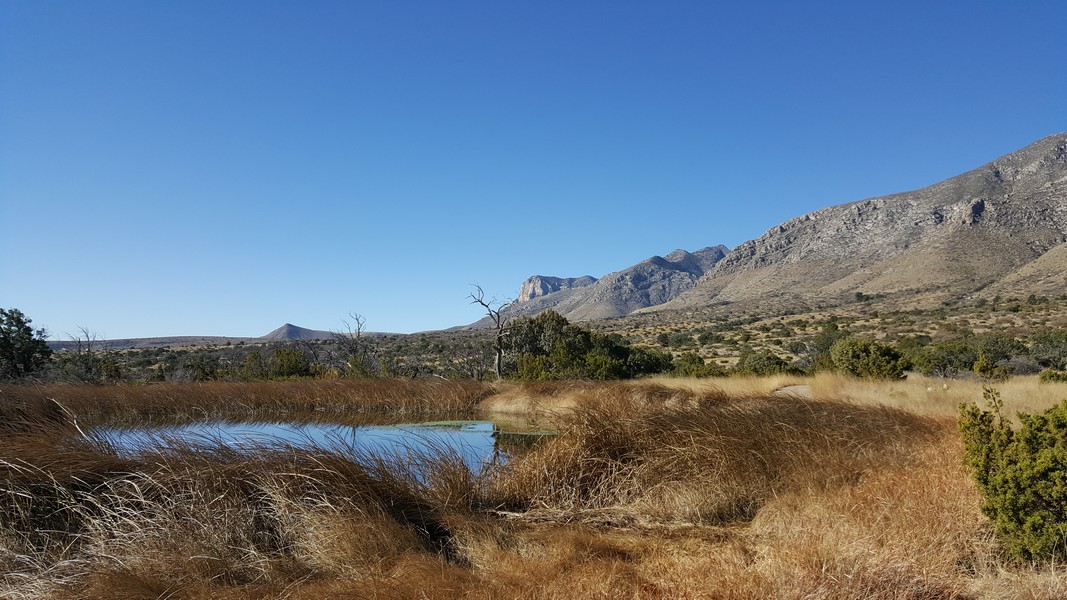
A lovely hike in Guadalupe Mountains National Park, just east of El Paso, Texas.

Mule deer buck, Guadalupe Mountains National Park, Texas

The Rio Grande River in Big Bend National Park in South Texas. The US is on the left side of the river, and Mexico is on the right.

A short hike takes you into Santa Elena Canyon, an oasis of lush greenery.
.jpg)
In San Antonio, Texas, we visited Grant's old friend, Dan. We were grateful for a warm place to stay when an ice storm closed the freeways for a day.
Mexico

Mexico is about one-fifth the size of the US. It's divided into 32 states. To avoid confusion, we list the state for each city we visited (as in the US, the same city name is found in multiple states).
To drive in Mexico you need insurance and paperwork, all easy to acquire. Mexico generally has very good roads, including many toll roads.
Contrary to what the media and State Department would have us believe, Mexico is a very safe place to visit. We never felt a moment of fear, and in general we actually felt safer than in the States. The Mexican people are incredibly kind and often go out of their way to help travelers; we could learn much from them.
Our main goal for this trip was to explore Mexico's colonial heartland, which is known for ornate colonial architecture (think Europe at a fraction of the price), folk art, and crafts.
Ciudad Victoria, Tamaulipas
The Mexico camping bible is called Traveler's Guide to Mexican Camping. It's a great resource but parts are outdated. We arrived at the campground in Ciudad Victoria to find that it was closed. (We later learned about the iOverlander campground app.)
It was our lucky day, because the property owners, Sonia and Russell, happened to drive by, and offered to let us stay in the closed campground for the night.

They closed the campground six years ago when cartel violence scared tourists away. Russell's mentally disabled brother now keeps an eye on the place. He spent the evening talking to himself on the porch.

We felt completely safe here, but it was a bit surreal. It was hard to imagine this was manicured sites filled with RVs just a few years ago.
San Luis Potosí City, San Luis Potosí
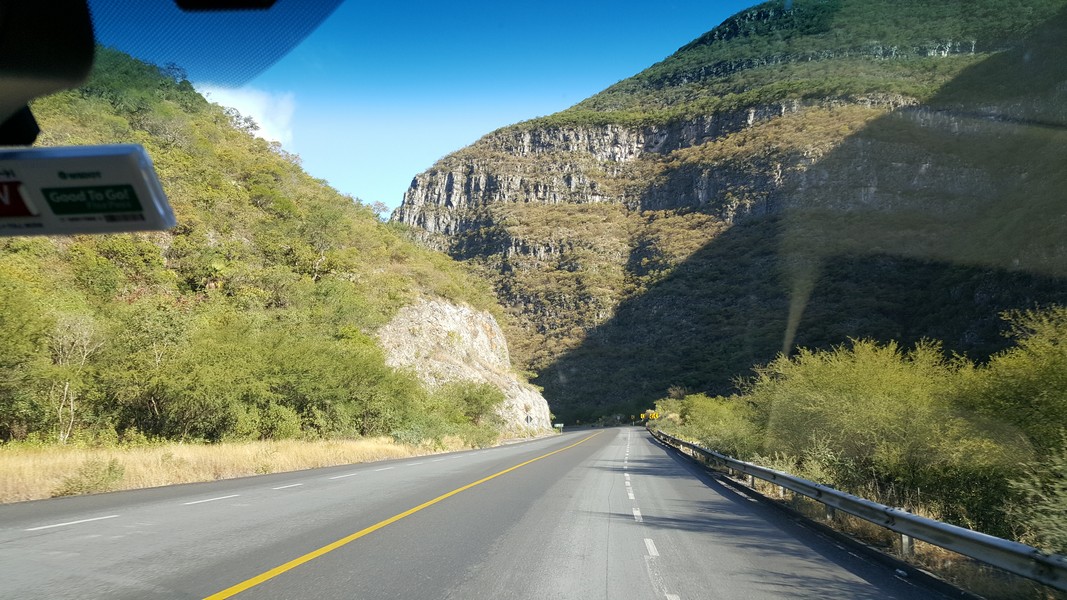
The next day we headed up into the mountains to the city of San Luis Potosí, at 6000 feet in Mexico's central highlands.
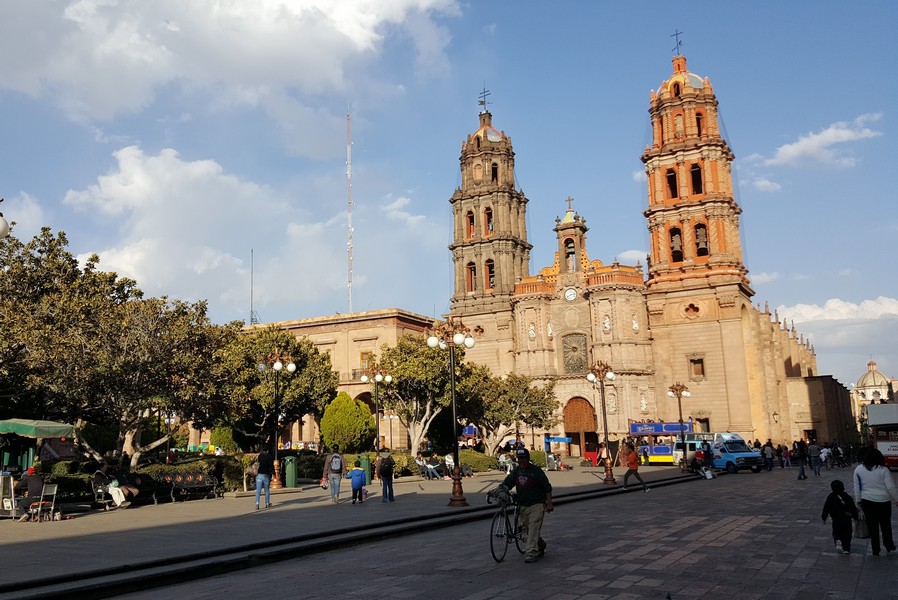
Like all of Mexico's colonial towns, San Luis has beautiful old churches. It's very pedestrian-friendly, and sees few tourists.

San Luis also has many lovely squares and plazas.

A young woman celebrating her 15th birthday, marking her transition to womanhood. The festivities include a mass and a big party.

Talented San Luis street musicians

There are no campgrounds in San Luis, so we spent the night on the under-construction street in front of a hostel. We felt completely safe. We paid $2.50 each to use the hostel kitchen, bathroom, and wifi. Those are schoolgirls walking by in their matching outfits (Mexican schoolkids wear uniforms.)
San Miguel de Allende, Guanajuato
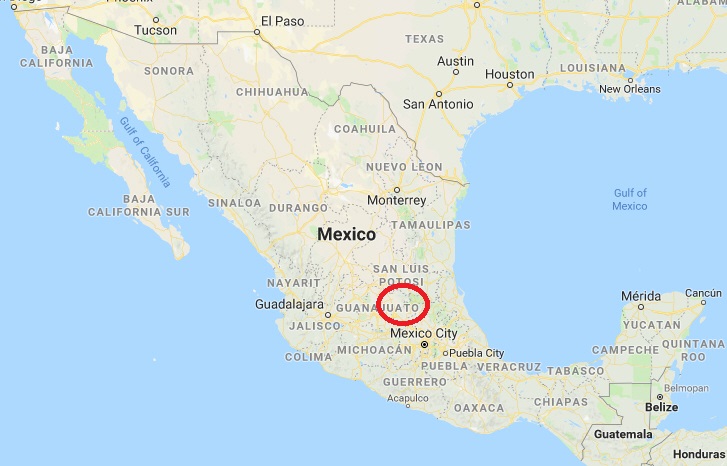

San Miguel de Allende is another charming colonial town in the Highlands. The weather in this part of Mexico is generally perfect: rarely cold or hot, not humid, and no insects.
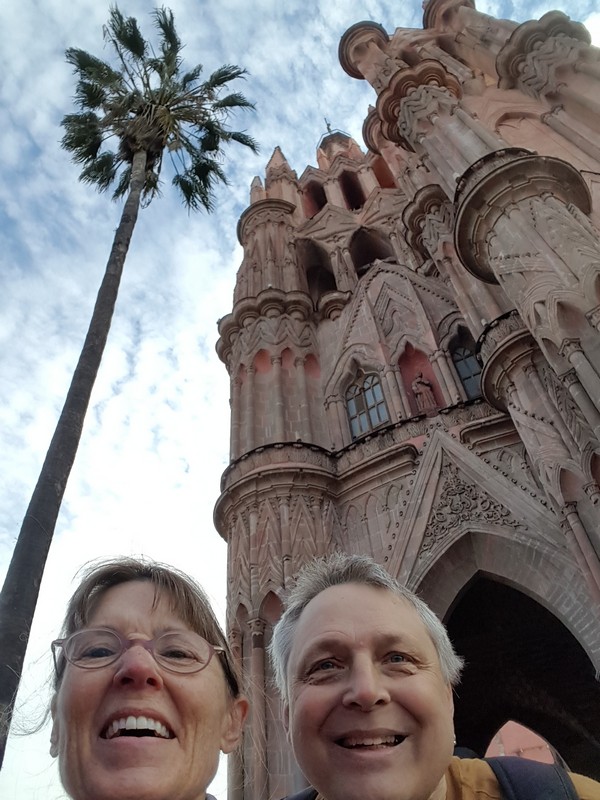
The fairytale church in the center of town

San Miguel has a large gringo population, and there are many gringo activities, such as exercise, art, music, and even Gringo Bingo. Often these are held in the domed building you see here.

I love the picturesque streets of San Miguel, but due to the gringo influx it's a pretty upscale version of Mexico.
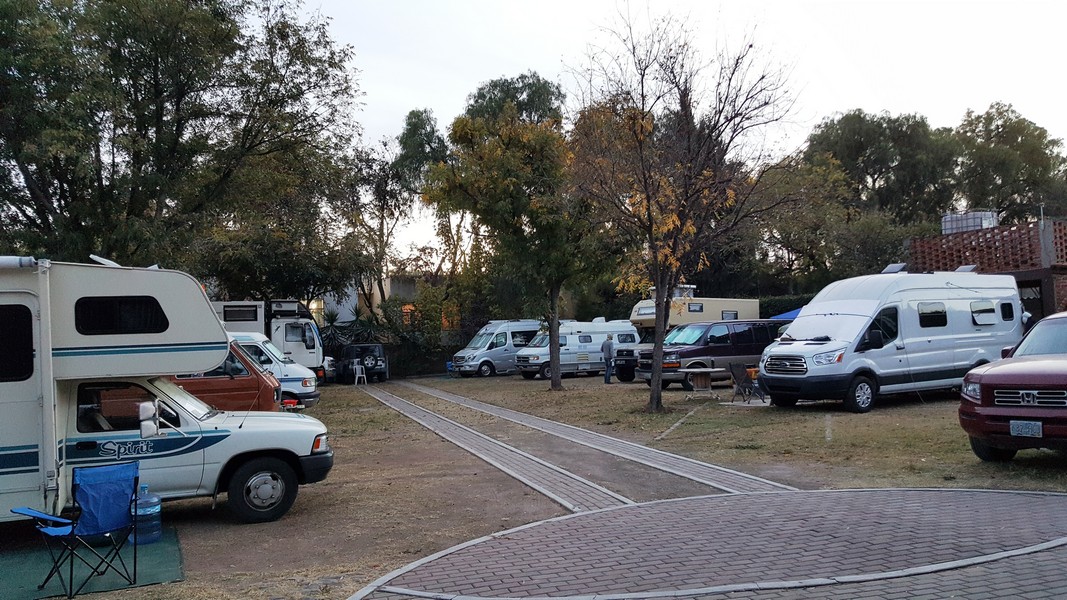
There's a campground right in town, making it easy to walk everywhere. Hot showers, friendly campers, and numerous daytrip options enticed us to stay for five days.

People lining up to watch the annual parade honoring the birthday of Mexican Independence hero and town namesake Miguel de Allende.
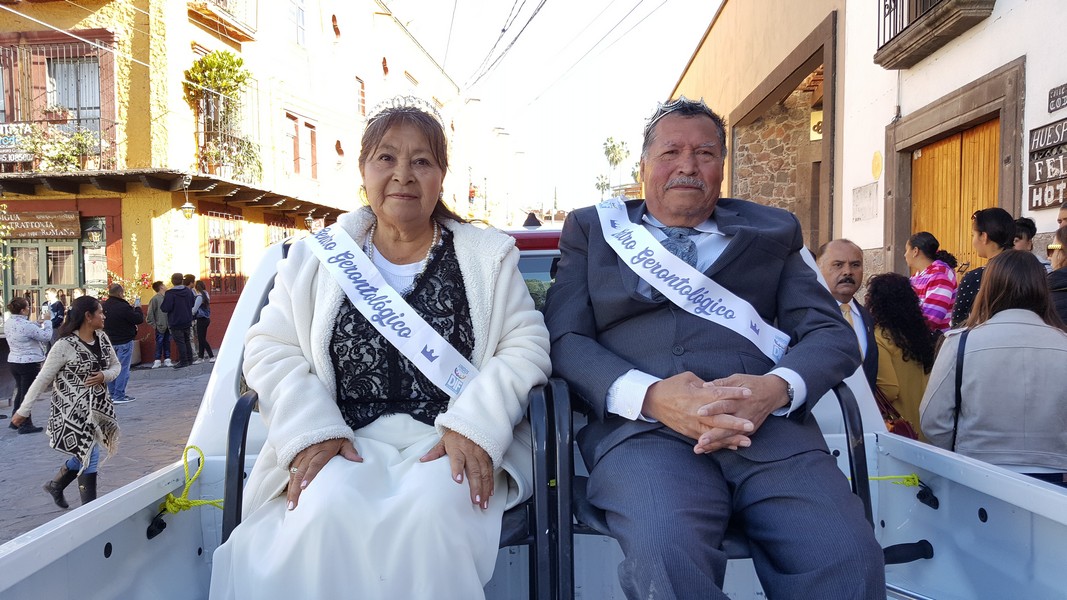
These handsome elders were chosen to represent the "third age" in the parade. Mexican culture respects and honors older people.

San Miguel parade

San Miguel parade
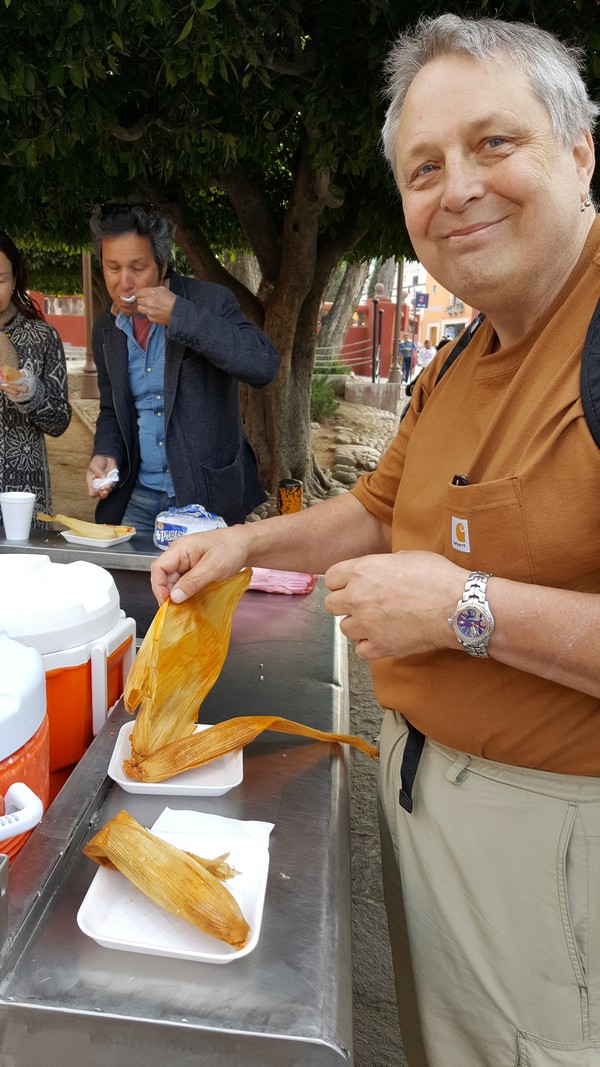
Tamales are a favorite breakfast street food in many parts of Mexico.
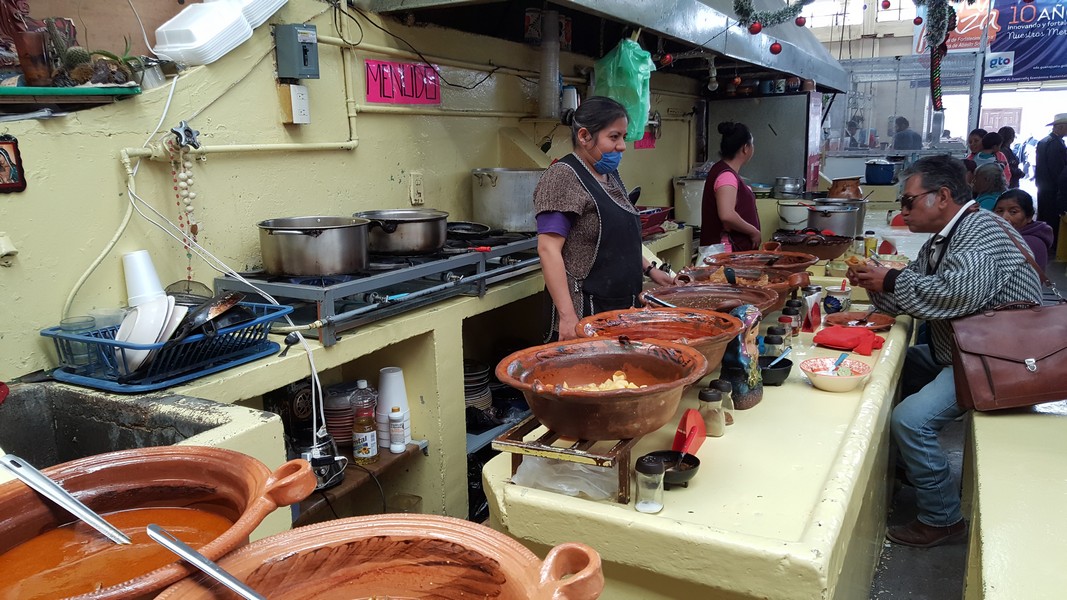
Every Mexican market has a restaurant area, where you can choose from a variety of proudly homecooked stews and other fare. We usually ate lunch out, and cooked dinner in camp.
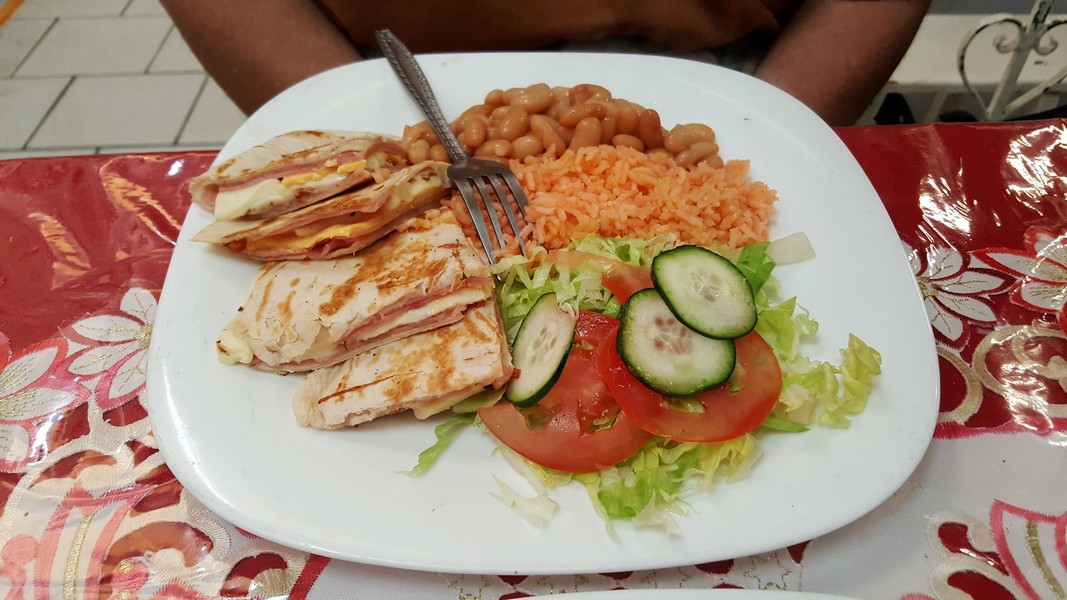
A syncronizada is a cheese quesadilla with ham. Although hygiene in Mexico has improved significantly over the years (handwashing signs and stations are everywhere), we avoid eating raw vegetables unless we soak them in disinfectant solution.

Giant prickly pear cactus in the San Miguel botanical garden

The botanical garden includes a trail along the rim of this wild canyon.

Violet-crowned hummingbirds zoomed around the campground.

We took a daytrip to nearby Dolores Hidalgo to buy some of the pottery this town is known for.

Dolores is also famous for its many flavors of homemade ice cream.
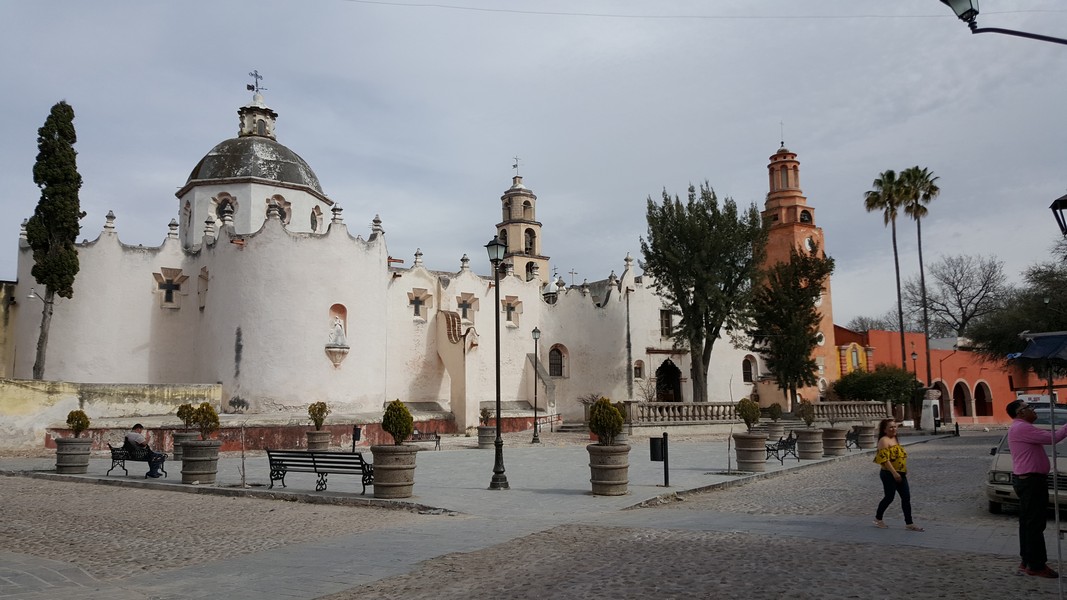
The Sanctuary of Atotonilco, built in the 1700s, is a World Heritage Site near San Miguel.

The church features stunning Baroque murals.
Querétaro City, Querétaro


Queretaro is a prosperous, pedestrian-friendly city with gorgeous architecture.

Santa Rosa de Viterbo church was completed in 1752.

Numerous pedestrian streets make Querétaro a delightful place to wander.

One of Querétaro's many inviting plazas
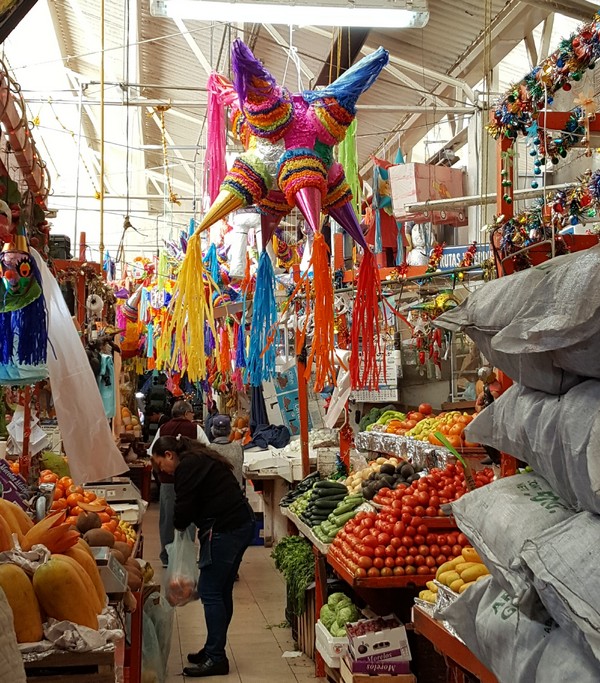
Piñatas in the Queretaro market

For a few pesos anyone can drop in to see a doctor without an appointment.
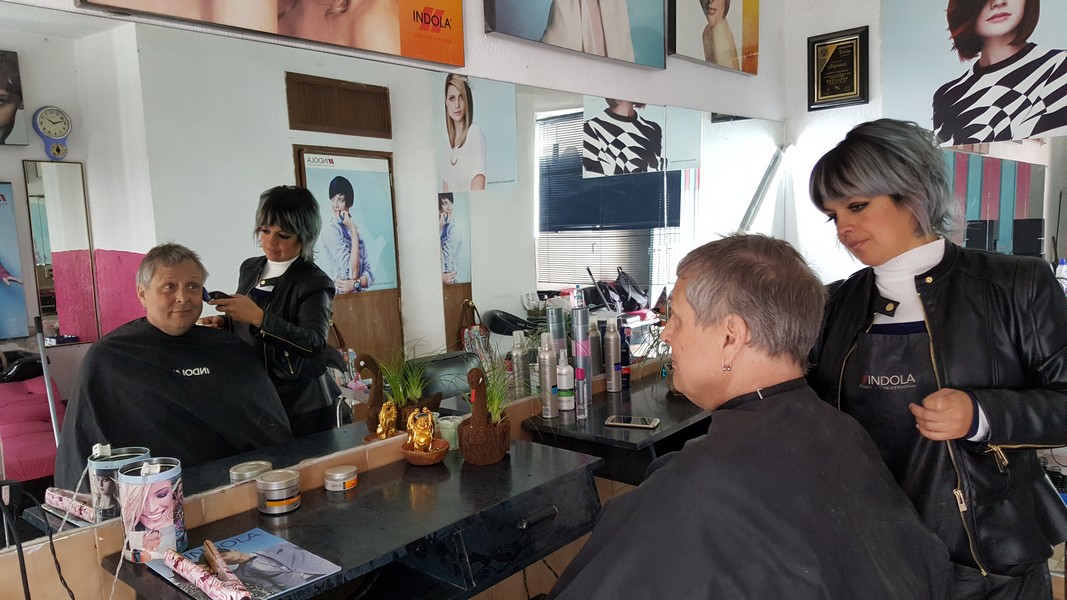
Grant's walk-in haircut cost $3, including a tip.
Cholula, Puebla


The Great Pyramid of Cholula is the largest pyramid (by volume) known to exist in the world today. The Spaniards "repurposed" the site by building a church on top of it.

The Cholula campground had fancy, clean bathrooms!

Combis, or collectivos, are minivans that serve as local busses. They arrive frequently, cost pennies, and can get you anywhere you need to go.
Puebla City, Puebla


The cathedral of Puebla was built between 1575 and 1690.

Puebla is known for the locally-made tiles that adorn many of its buildings.

Sunday is family day in Mexico, and cities often provide activities and live music in the plazas. This hula hoop toss was a big hit.
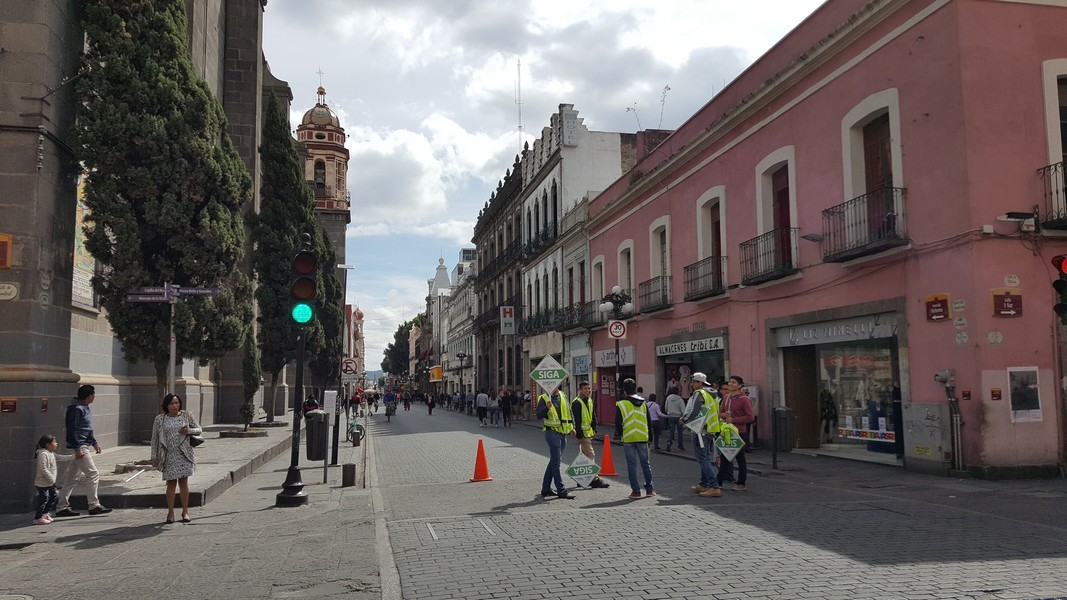
Some of the streets are closed to cars on Sundays.

These friendly young women at the local tourist office typified the way Mexicans everywhere treated us.

Pedestrian street in Puebla
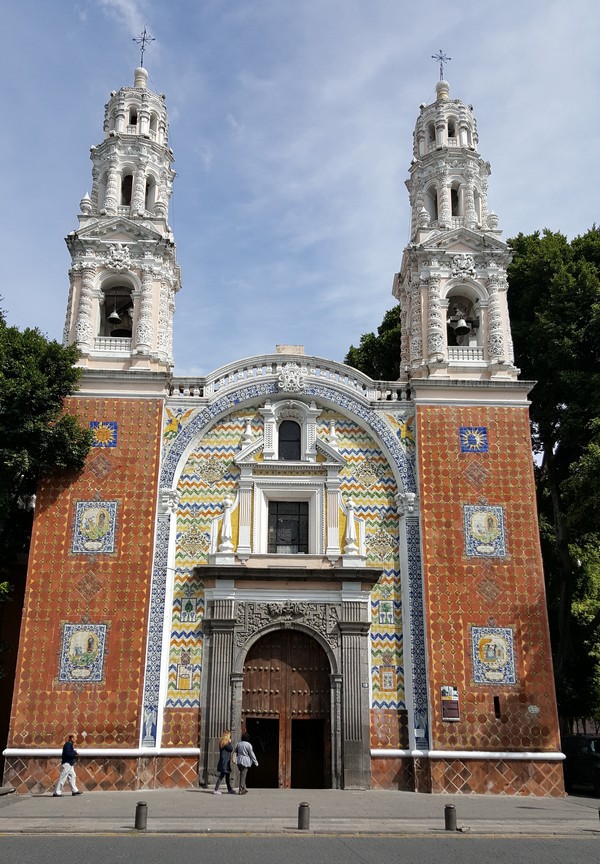
Tile-covered church
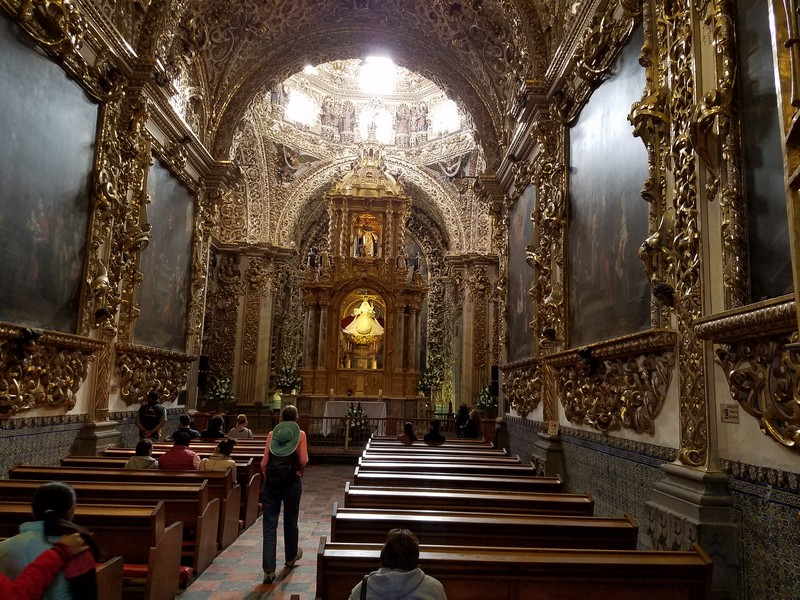
The gold-encrusted Rosary Chapel in the Church of Santo Domingo has been called "the eighth wonder of the world." I've seen a lot of beautiful church interiors, and this one took the cake.

The nearby active volcano Popocatepetl is almost 18,000 feet high.
Tepoztlán, Morelos
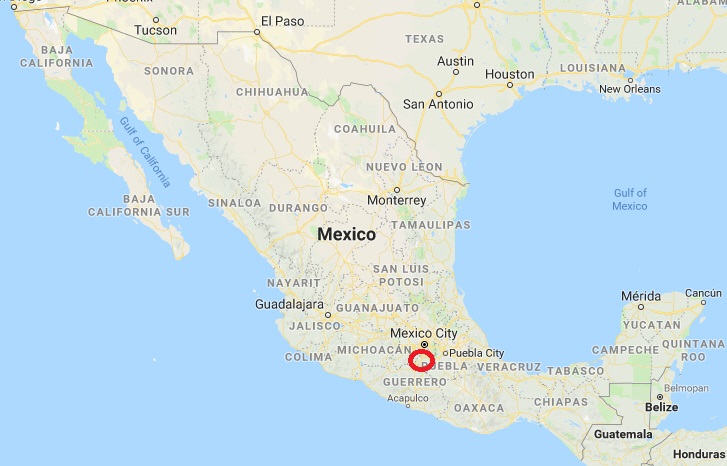
The tiny hill town of Tepoztlán has a reputation for mysticism and spirituality, because legend says it's the birthplace of the Aztec god Quetzalcoatl. There's an Aztec pyramid on the cliff above town.

Eroded jungly hills on the road to Tepoztlán

A church built in the mid-1500s provides a backdrop to the town.
Taxco, Guerrero
The former silver mining town of Taxco (tahss-ko) is known for silver jewelry.
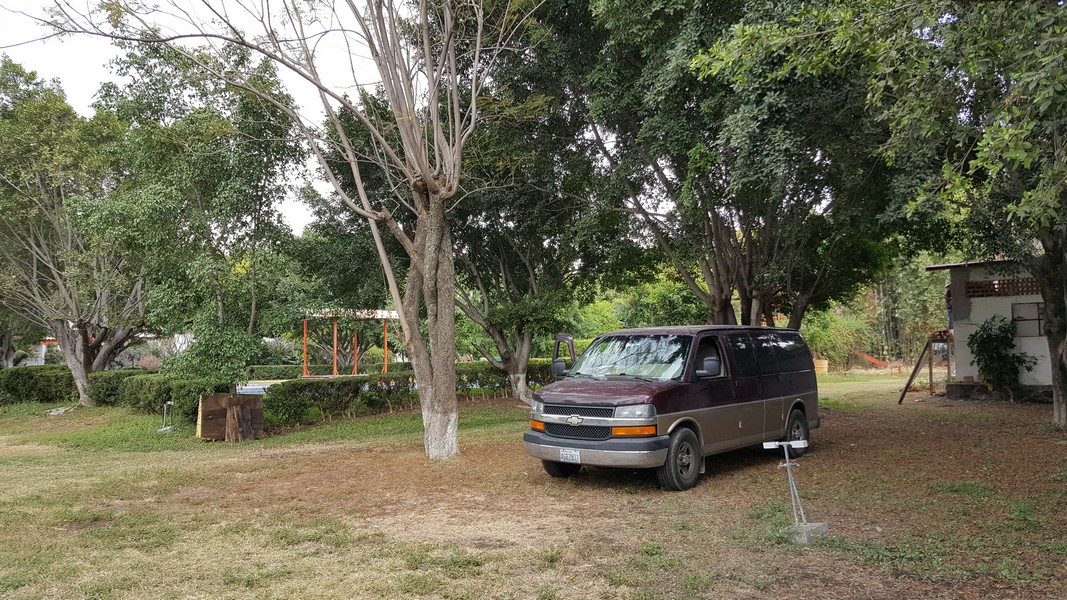
El Paraiso campground, about an hour north of Taxco, is popular for weekend getaways from nearby Mexico City. But we were there during the week and had the place to ourselves.
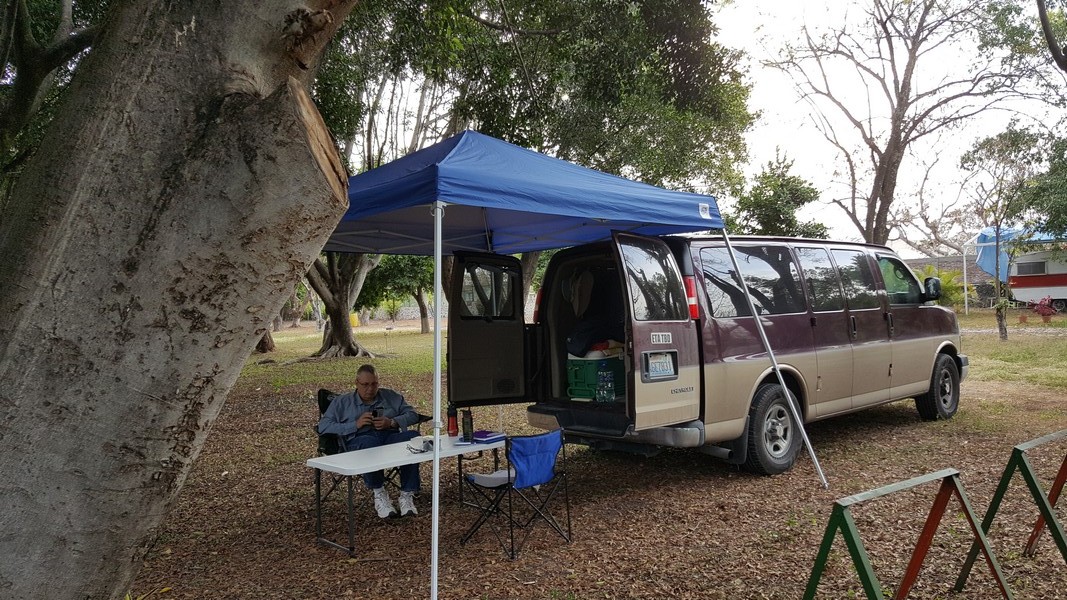
Our canopy is handy for sun, rain, and trees that drop nuts, berries ... or bird poop!

Taxco spills down the side of a hill.
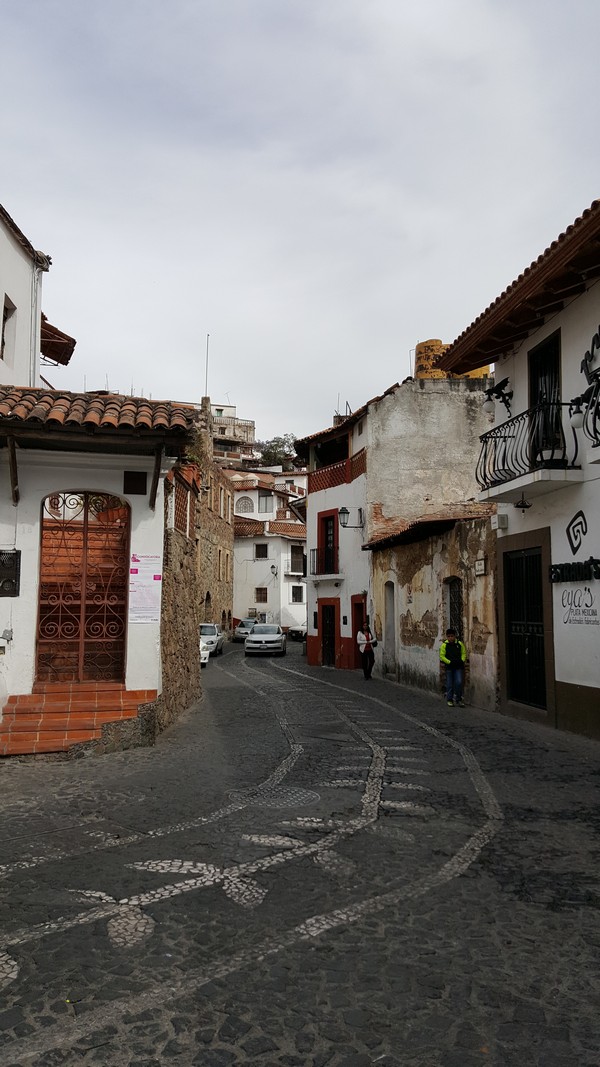
The narrow streets have cobbled designs.
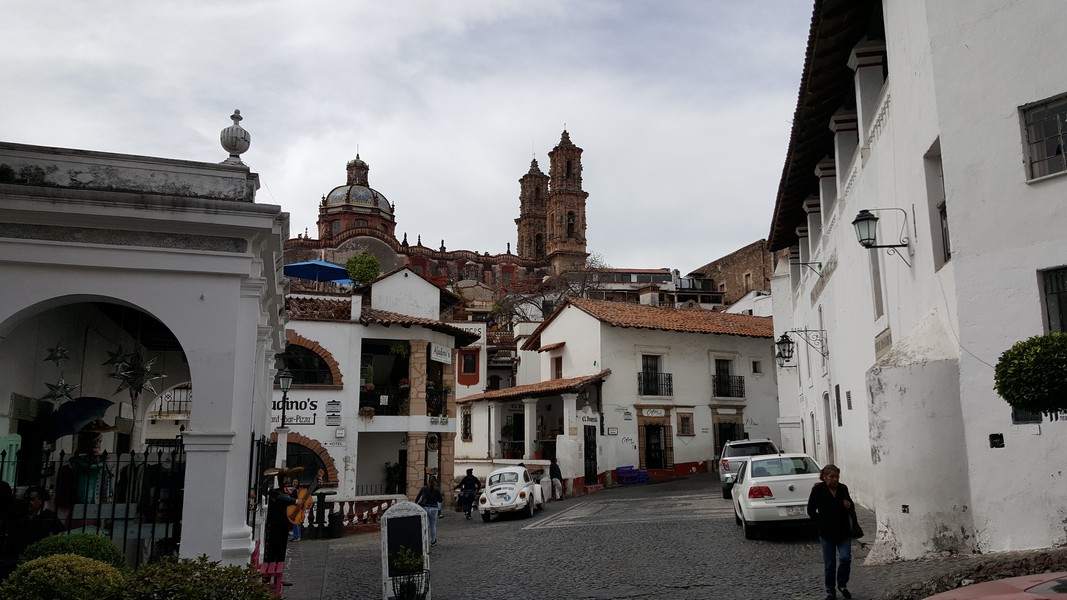
The center of town is packed with stores selling silver jewelry. Competition is fierce, so sellers were more assertive here than in other places we went.

Signs help with finding your way around the labyrinthine market.

Taxco is known for its "penitentes," who walk the streets of town during holy week, practicing various forms of self-torture.
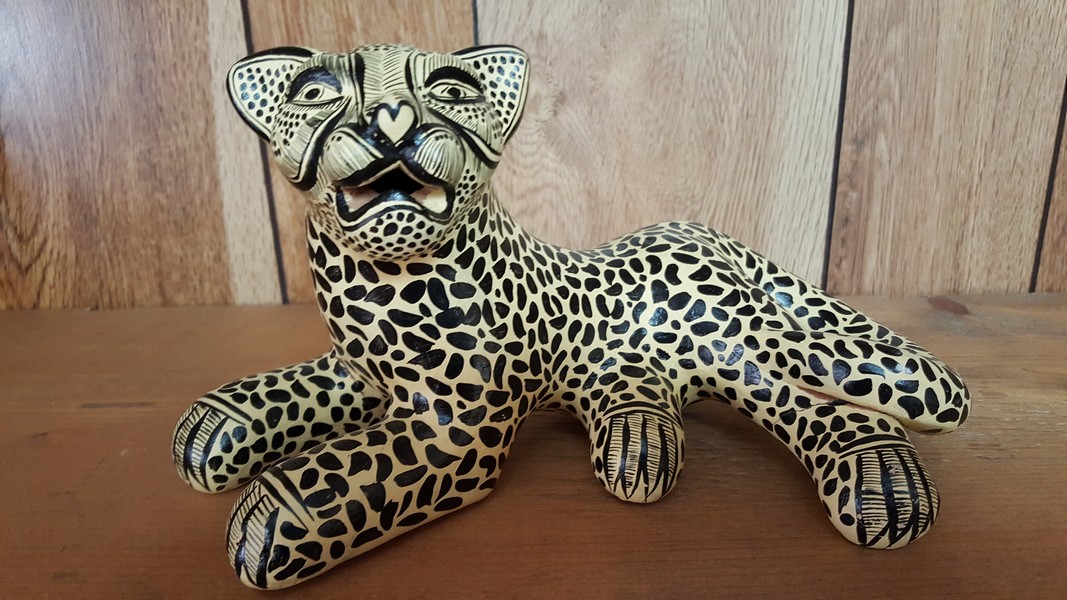
We bought this ceramic jaguar.
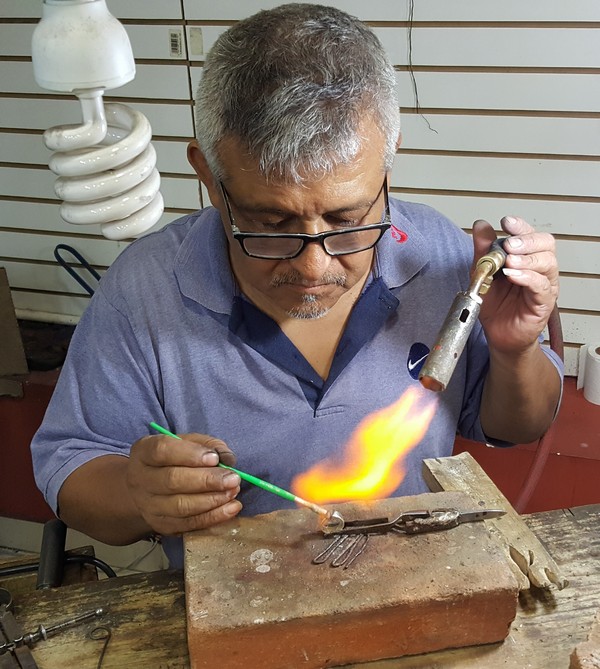
Karen bought a ring from this silversmith. It was too big, so he cut it to size and resoldered it.

His wife and daughter keep him company while he works.
Pátzcuaro, Michoacán

We loved Pátzcuaro and ended up spending five days there. It's the center of the indigenous Purépecha people, who make up most of the town's population.
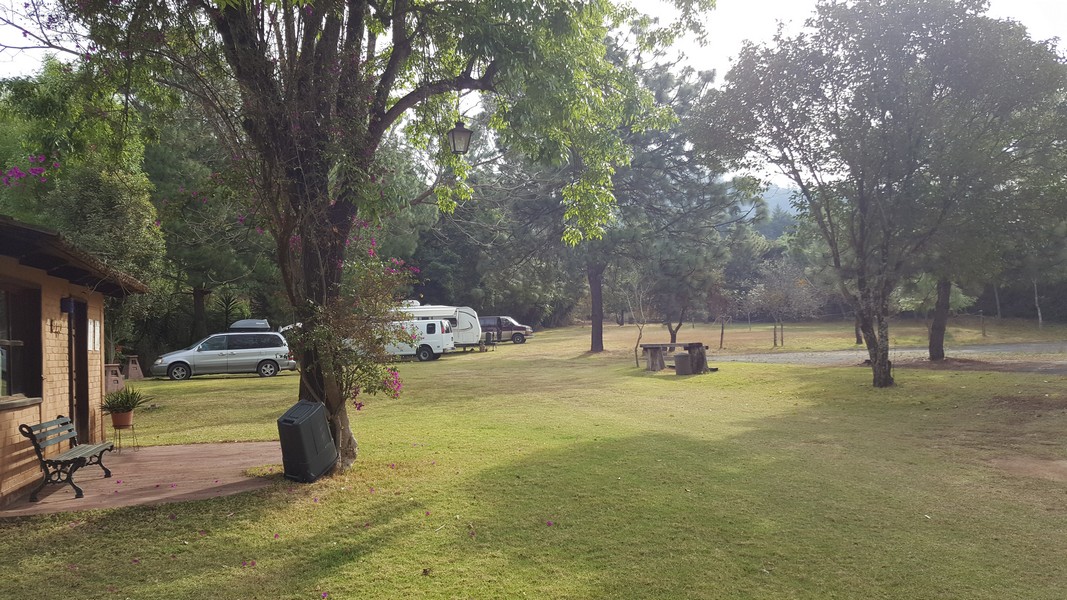
The park-like campground was quiet, with a pool, hot showers, and friendly campers. The frequent busses to town went right past the entrance, took 10 minutes, and cost 40 cents.

Mexican town plazas are community gathering places, where people socialize, shop, eat, and play.
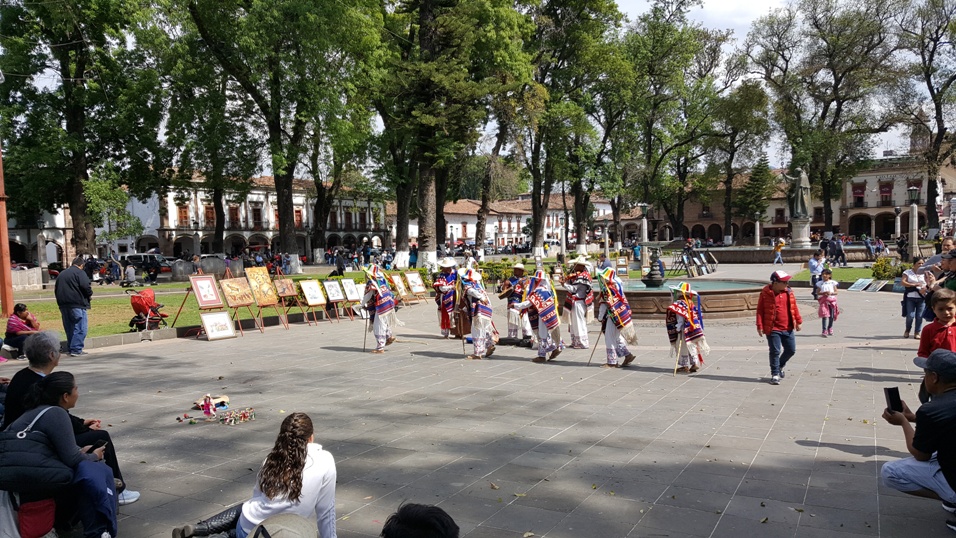
Pátzcuaro's main plaza features traditional Purépecha dancing on the weekends.

The humorous Dance of the Little Old Men uses wooden sandals for a clogging effect, and has pre-Hispanic roots.
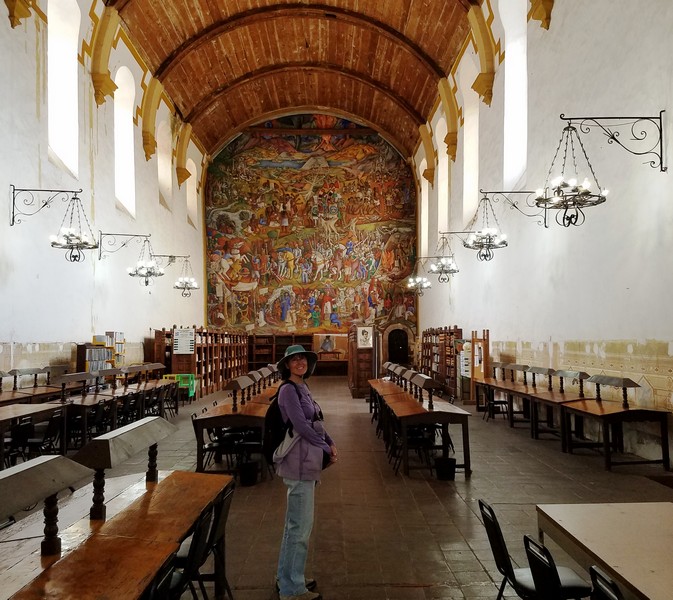
An impressive mural in the library depicts the history of Michoacán, beginning with the Purépecha story of creation.
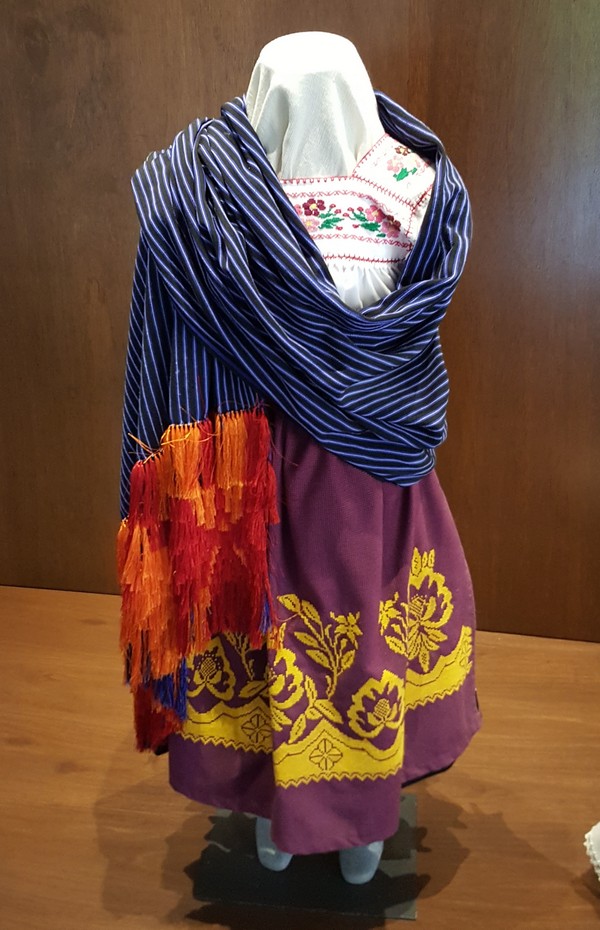
A traditional Purépecha outfit includes a skirt, apron, shawl (rebozo), and embroidered blouse. Each village has its own patterns and colors.
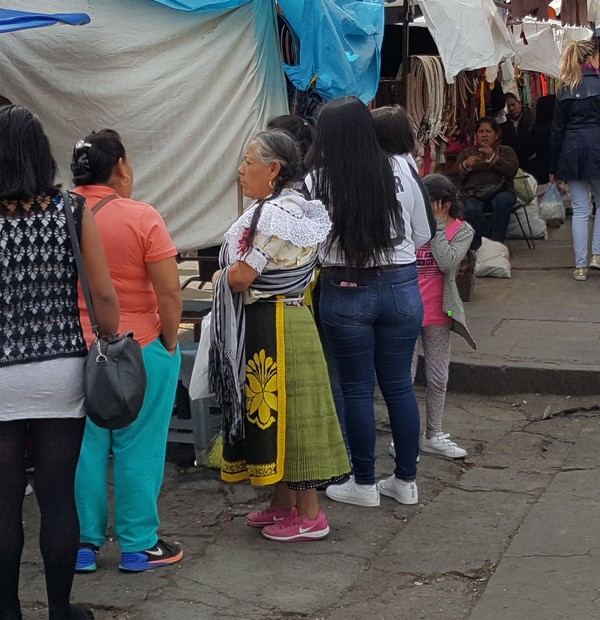
This woman's traditional outfit is complemented by pink athletic shoes.

We bought this 12" ceramic Day of the Dead catrina in one of Pátzcuaro's artisan shops.
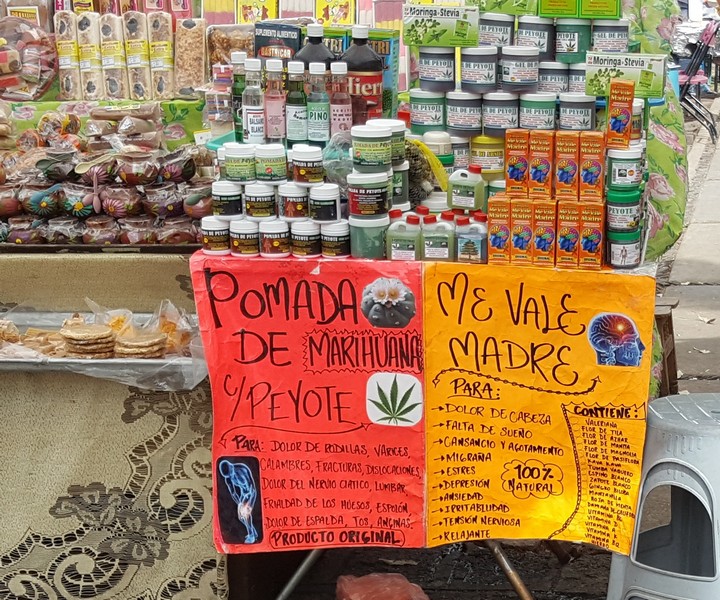
Herb stands in the market sell a marijuana and peyote cream that's supposed to cure everything from aches and pains to coughs and angina.

This "painting" in Pátzcuaro's excellent cultural museum is made entirely of bird feathers. (Collected from nests, not from killing birds, I was assured.)

Golden-orange black-hooded orioles frequented the campground.

Lake Pátzcuaro can be seen from a hill above town.
Santa Clara del Cobre, Michoacán

There are many small towns near Pátzcuaro, each with a craft specialty. Santa Clara is known for coppersmithing.
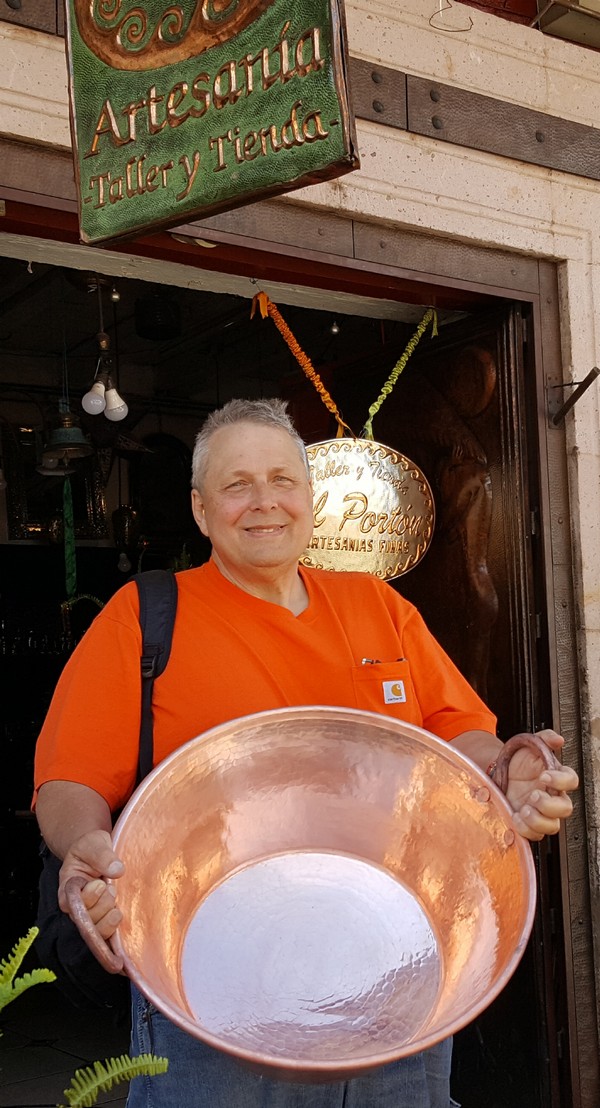
Grant has long wanted a copper kettle, or cazo, for making carnitas.

You can buy a copper bathtub for about $1000. Getting it home might be a challenge.

Coppermaking is a laborious and unhealthy process. The copper is heated on wood fires to make it malleable. Workers breathe smoke all day.

The heated copper is pounded with heavy hammers, and there is no hearing protection against the loud, metallic blows. One worker told us "you get used to it."

A corunda is a triangular tamale from Michoacán, plain or with a cheese filling. They are steamed in green leaves, and served with salsa and crema. Grant loved them.

Grant's favorite corunda vendors

February 2 is Dia de la Candelaria (Candlemas in English). It commemorates the day that Mary took newborn Jesus to the temple to be blessed. Mexicans celebrate by bringing their baby Jesus dolls to church be blessed. Most of the babies you see being carried in this photo are actually dolls.

Men walk ahead of the parade lighting rockets by hand. They go zooming into the air in a cloud of smoke and explode with a loud boom. Good thing all the roofs are tile.
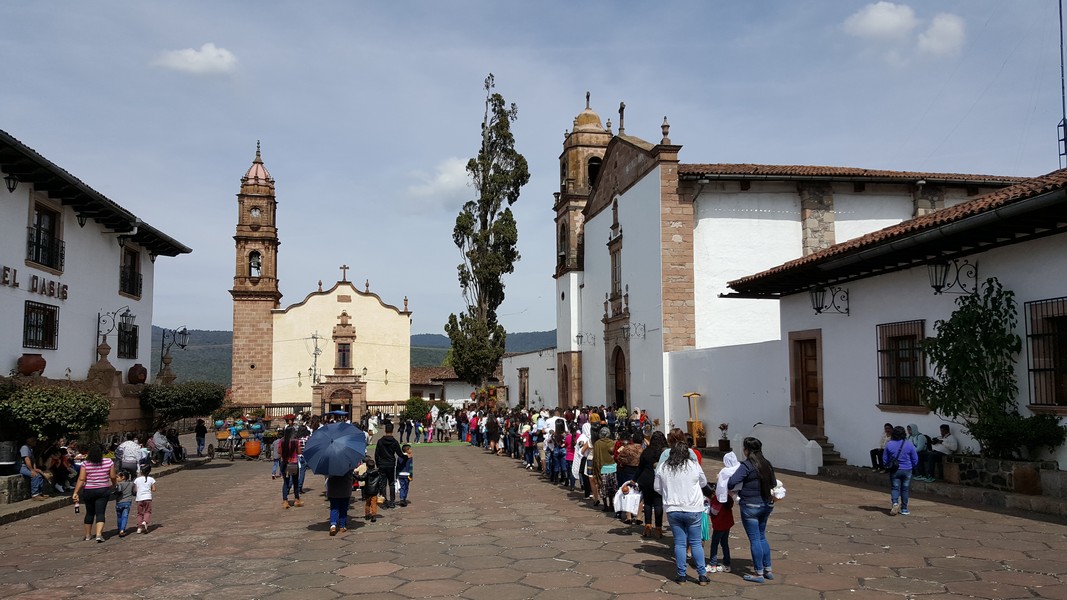
Santa Clarans lining up at the church to have their dolls blessed

People often spend a lot of money on elaborate clothing for their dolls.

Young women with their baby Jesus dolls.

The nearby small town of Cuanajo is known for its colorfully-painted wooden furniture.
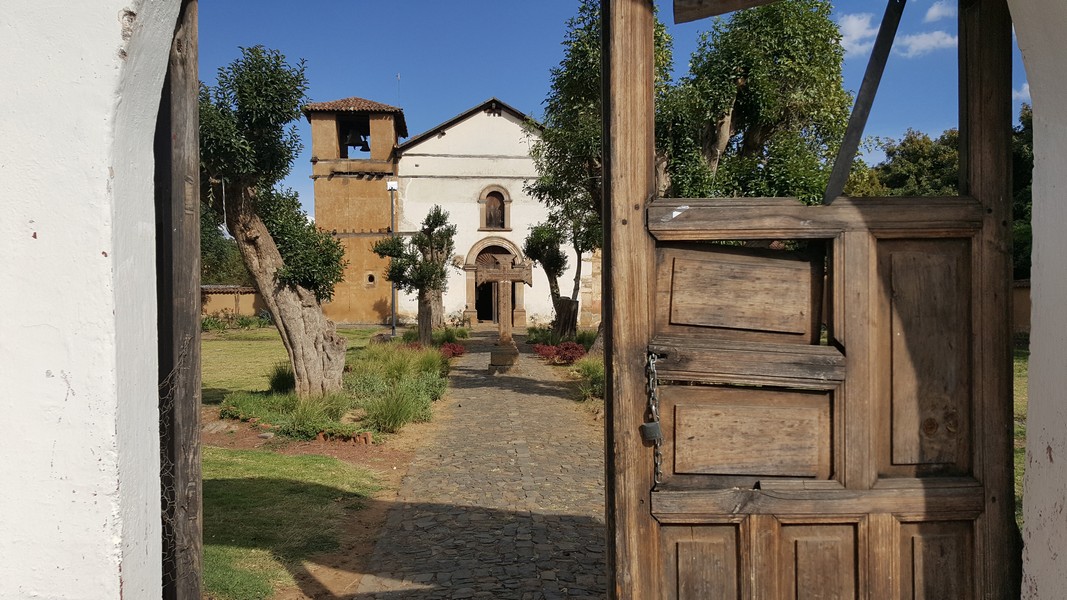
The humble exterior of the 16th-century mission church in adjacent Tupataro gives no indication of the treasures within.

Called "The Sistine Chapel of the Americas," the intricate and colorful ceiling was painted in 1772 and restored in the 1970s. The gilded altar is icing on the cake. Who knew that Michoacán was known for its painted wooden church ceilings?

Michoacán is a beautiful state, with many lakes and rolling hills.
Guadalajara area, Jalisco


Atotonilco is one of several small lakes near Guadalajara. It's less developed than larger and better-known Lake Chapala.

Lake Atotonilco's estuary is a sanctuary for birds.

We saw many three-foot-tall wood storks and pink spoonbills.

Stilts feed on the mud flats.

There were dozens of irridescent glossy ibis - the most I've ever seen in one place.

This is Chimulco campground. You can see the lake through the trees. Like most campgrounds we visited, this one was a mixture of people staying anywhere from one night to six months. Some come year after year, and leave a rig parked permanently. Everyone is very friendly and happy to share information.

Next door is an "aquatic park" with thermal pools. They're filled fresh each morning, and campers can use them early, before they open to the public. One morning I saw the Southern Cross constellation. (We were south of the Tropic of Cancer.)

A vendor in the adjacent town of Villa Corona making fresh-squeezed orange juice. Nectar of the gods.
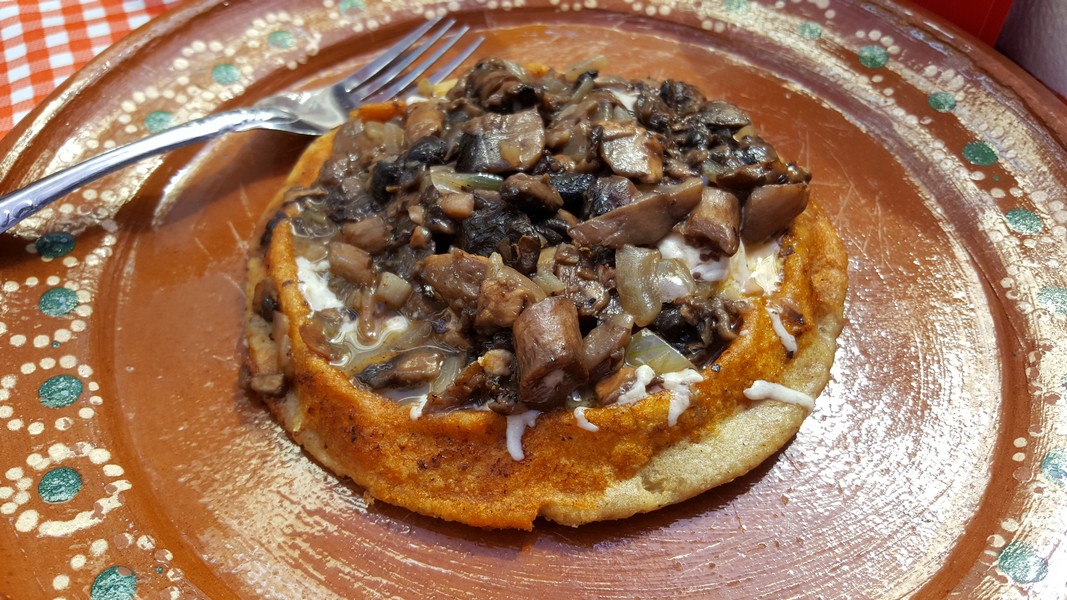
Pellizcada are like deep dish tacos, filled with your choice of meat, vegetables, and cheese. I chose mushroom, onion, and cheese. In other parts of Mexico they're called sopes.

About an hour away, on the north shore of Lake Chapala, is a town called Ajijic (Ah-hee-heek). It's charming, but has been mostly taken over by elder gringos.
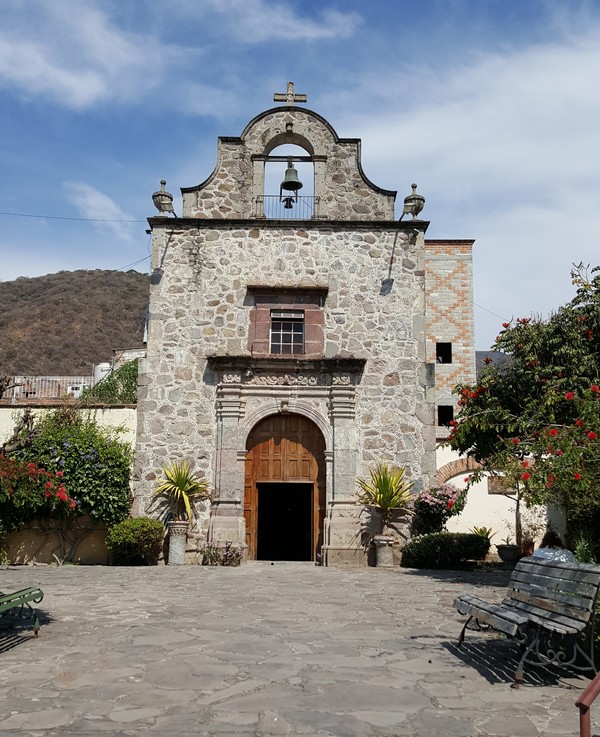
An old mission church in Ajijic
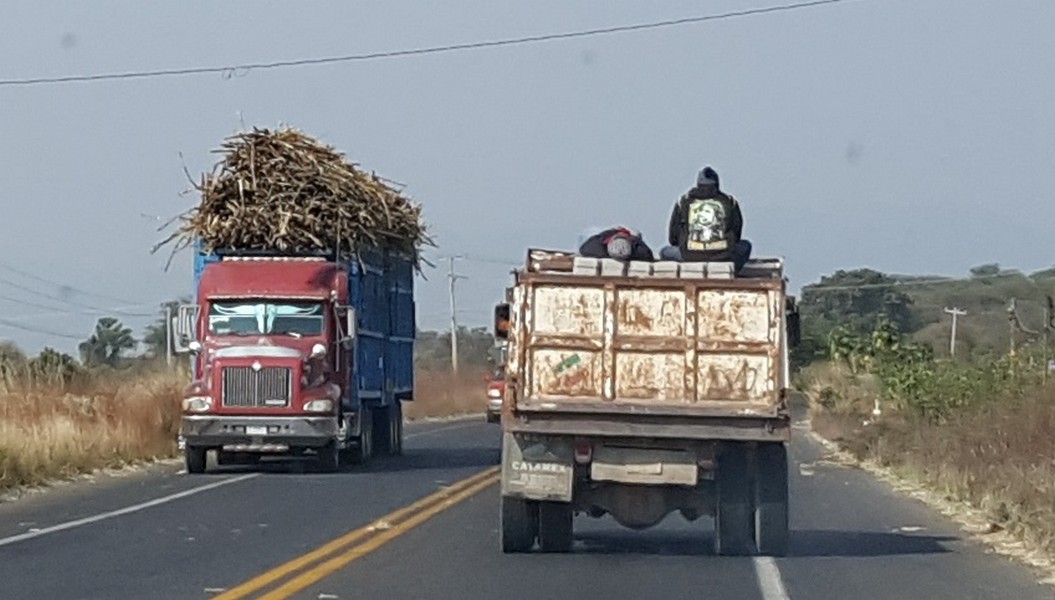
It was sugar cane harvest season, and the road was thick with heavily-loaded cane trucks.
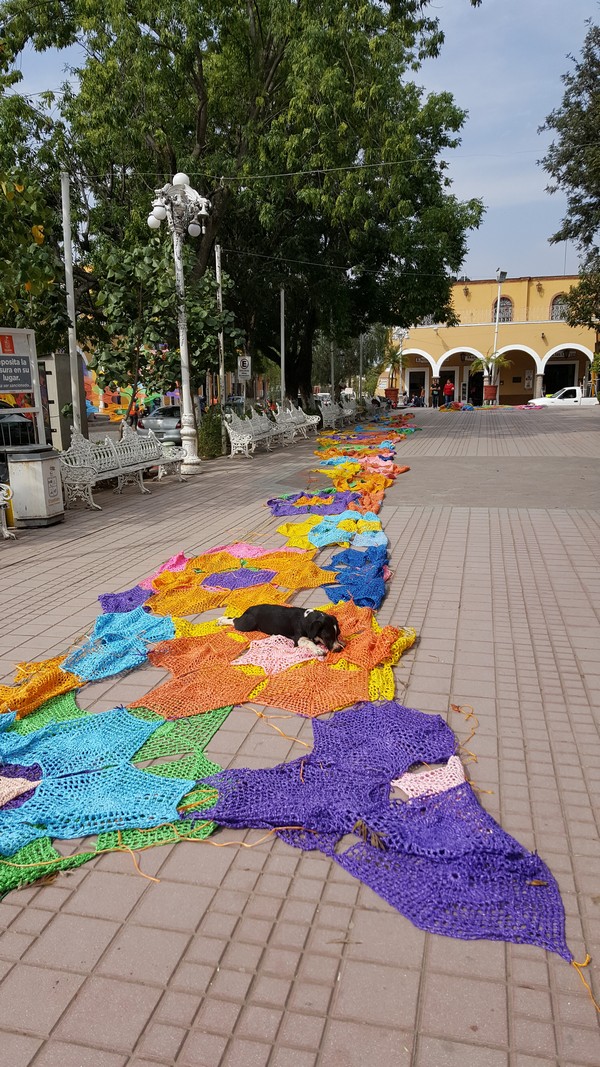
In the small town of Etzatlan, people were preparing for Carnival weekend by hanging up colorful woven streamers. A dog took advantage of the soft place to snooze.

Grant tried goat stew and loved it.

Beautiful scenery on the road west of Guadalajara

This road is called the "Tequila Route," and we saw acres of tequila agave.
Santa Maria del Oro, Nayarit
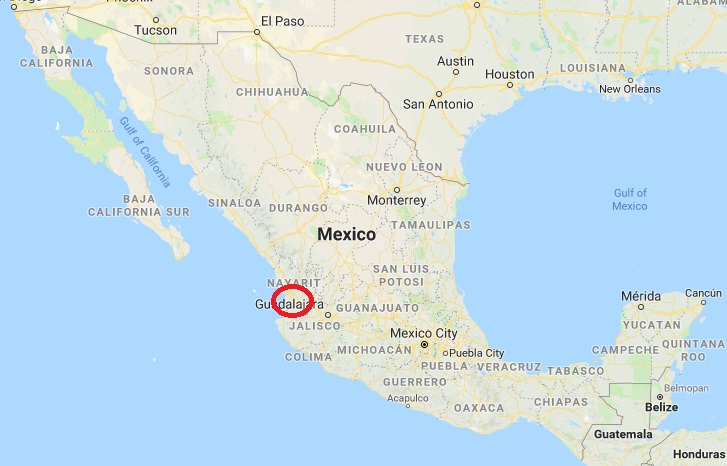
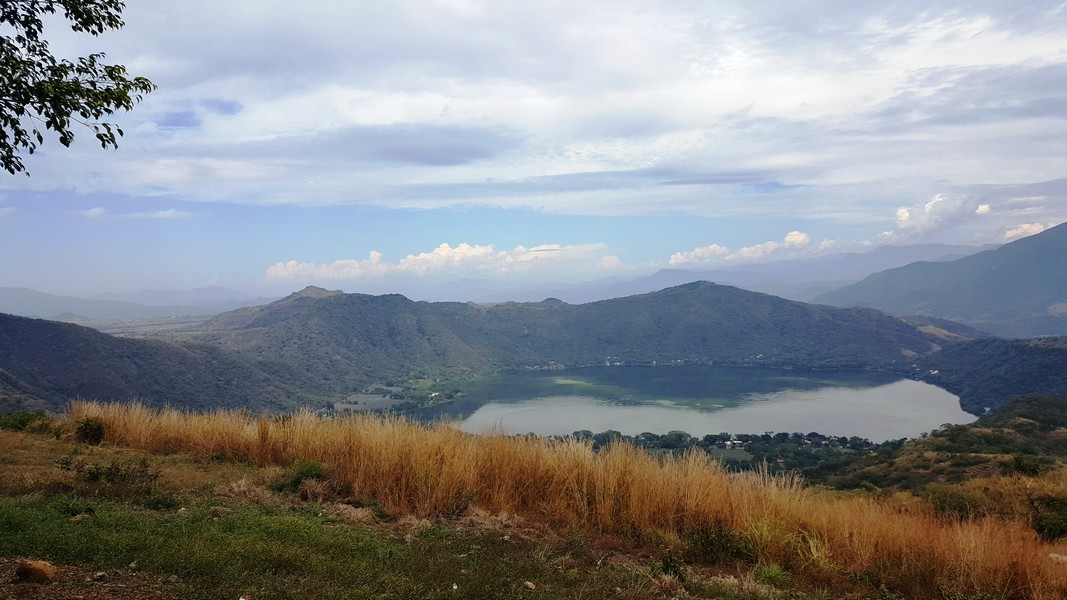
Santa Maria del Oro Lake sits in an extinct volcanic crater.

Winters are quiet here, but in the summer it's a popular place for swimming and kayaking.

We enjoyed walking the cobbled road along the lake.

Turkey-like chachalacas hang out in the trees.

We saw many of these brilliantly-colored vermilion flycatchers all over Mexico (and southern Arizona).
San Blas, Nayarit


It felt exotic to drop down out of the mountains and see fields of banana trees along the coast.

Although frequent road signs stress that seatbelts are mandatory, you still see a lot of people riding in the back of trucks.

At the Miramar campground in San Blas we enjoyed lounging by the pool and listening to the waves on the beach.
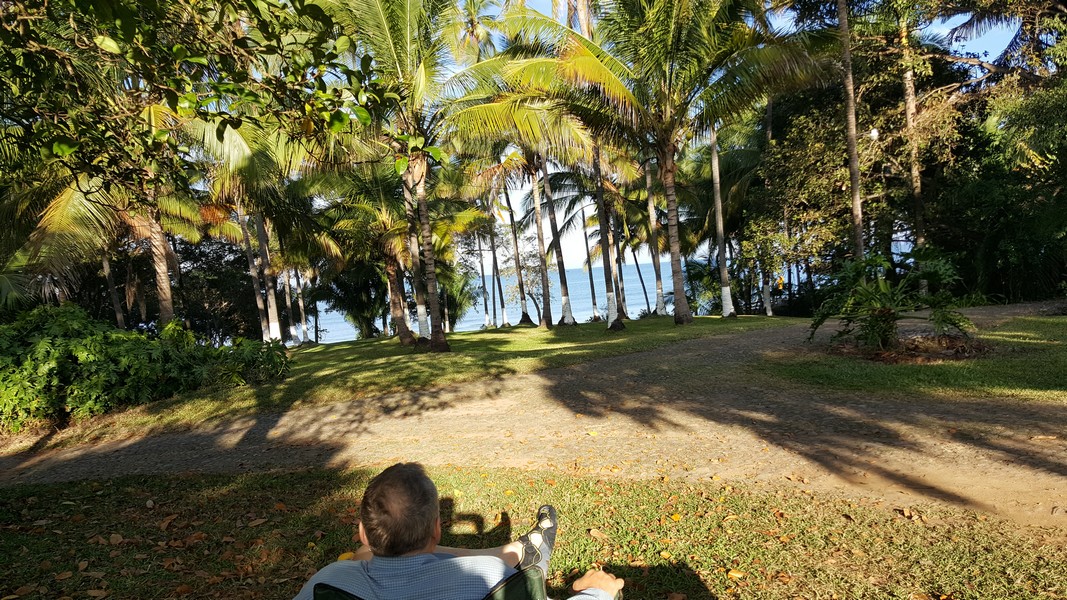
We had the place to ourselves all day.

In the evening about 30 college kids and professors arrived and set up a tent city. Other than happy socializing in the pool, they were surprisingly quiet.
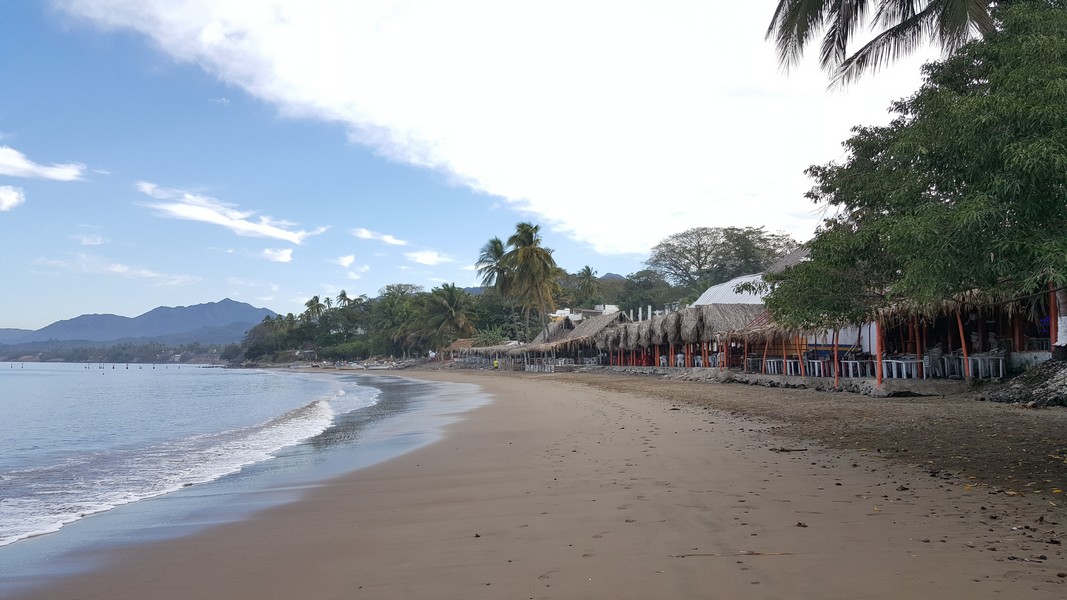
Eateries along the beach

A fishing boat named Karen
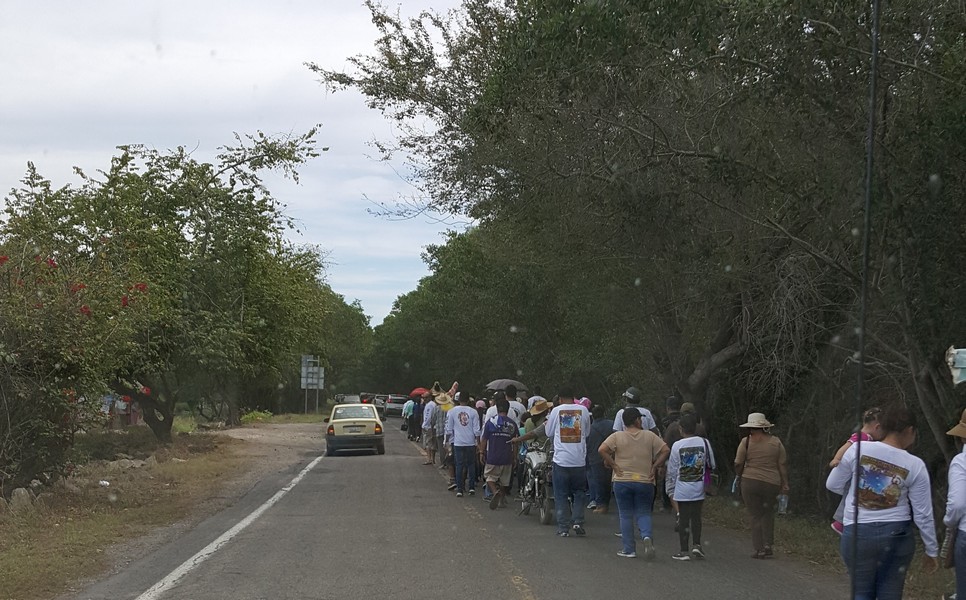
We saw many funeral processions like this one.
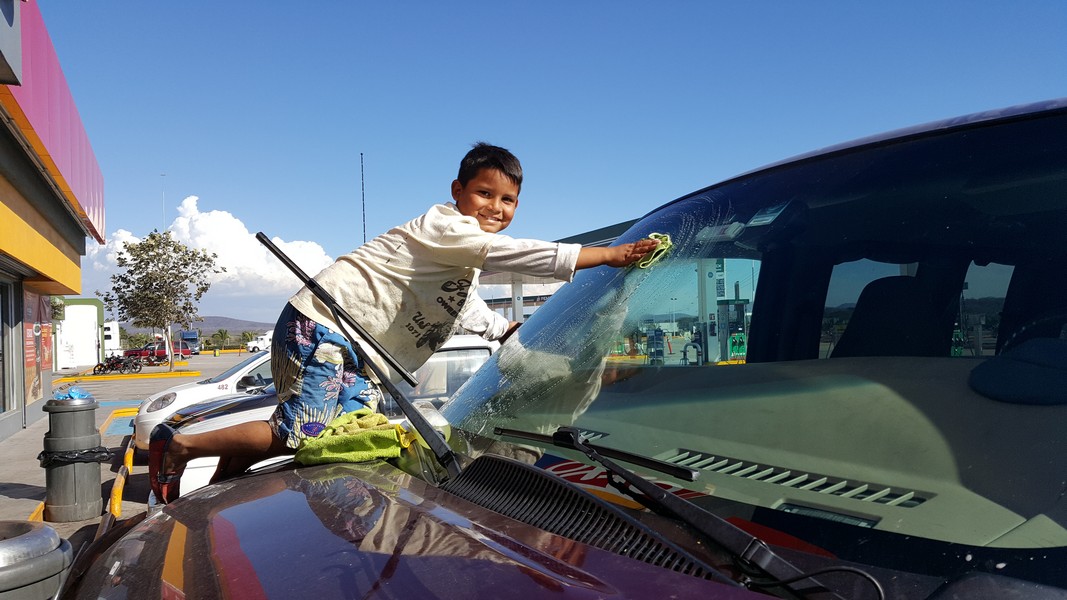
In parking lots and busy intersections, "squeegee men" of all ages offer to wash your windshield or your whole car for a few pesos.
Ceuta, Sinaloa

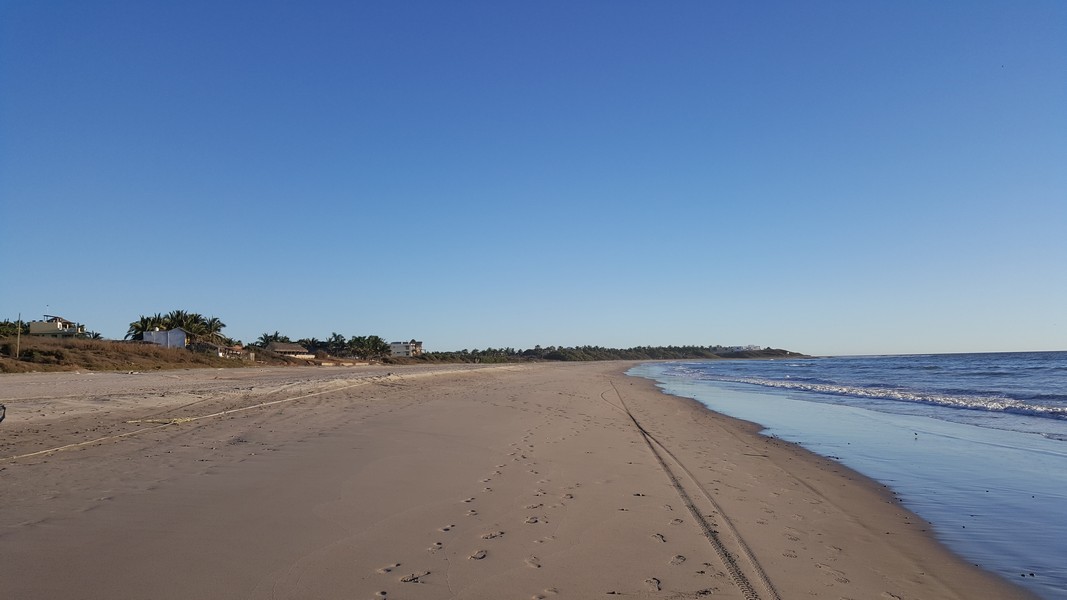
This friendly dirt-road fishing town has an easy-to-walk-on beach that goes for miles.
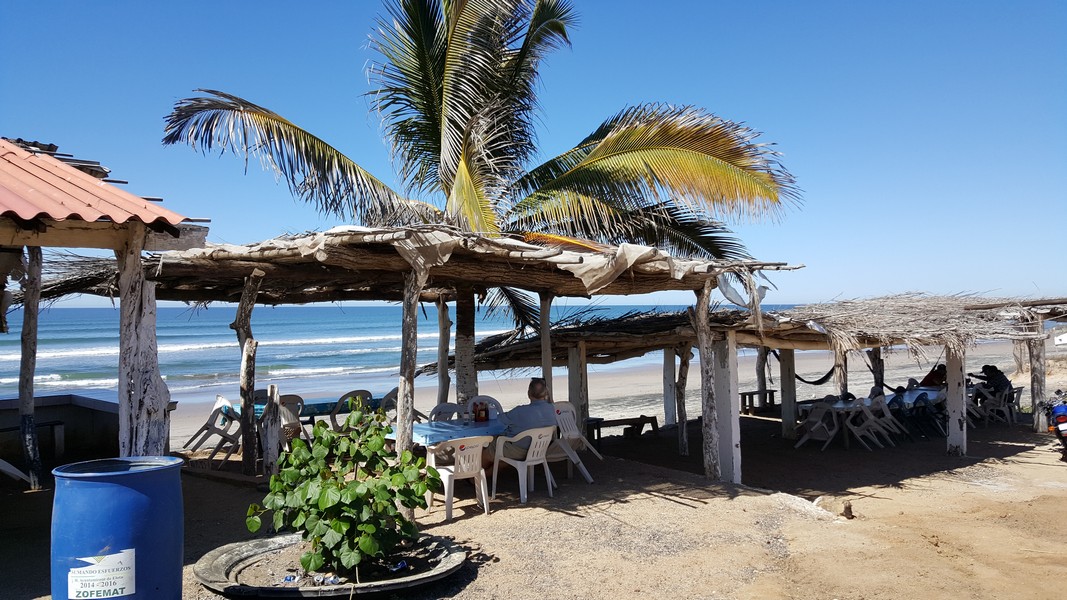
The fresh-caught shrimp and octopus at this quiet eatery were almost as good as the ambience.

You couldn't beat the beach access from the Villa Celeste campground.

Corn fields and mountains in Sonora, Mexico. After this trip I feel OK about buying produce grown in Mexico, because it helps their economy and provides so many jobs.
Alamos, Sonora
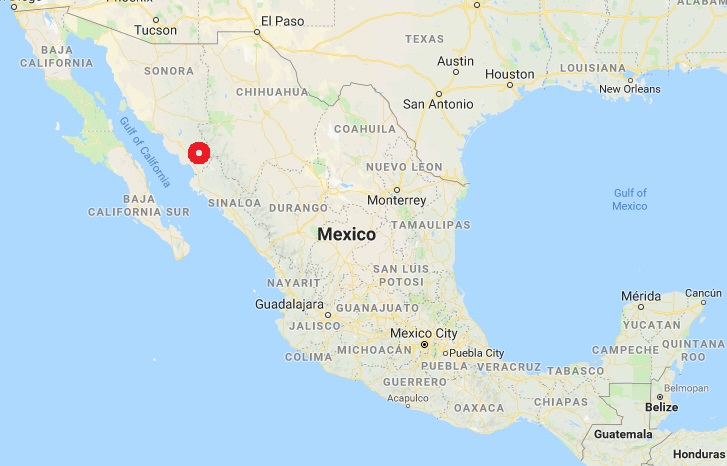

The small town of Alamos is nestled in the mountains about eight hours south of Nogales, Arizona. It's in a transition zone between the Sonoran Desert and the tropical regions to the south. The resulting "dry tropical forest" has a rich diversity of plants and wildlife.

The peaceful central plaza in Alamos
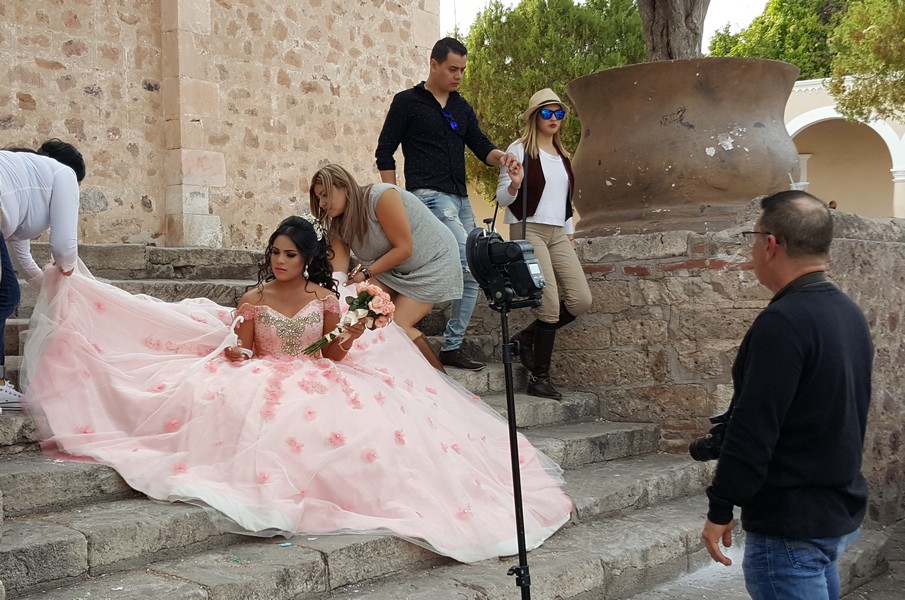
Fifteenth birthday photo shoot on the steps of the Alamos church
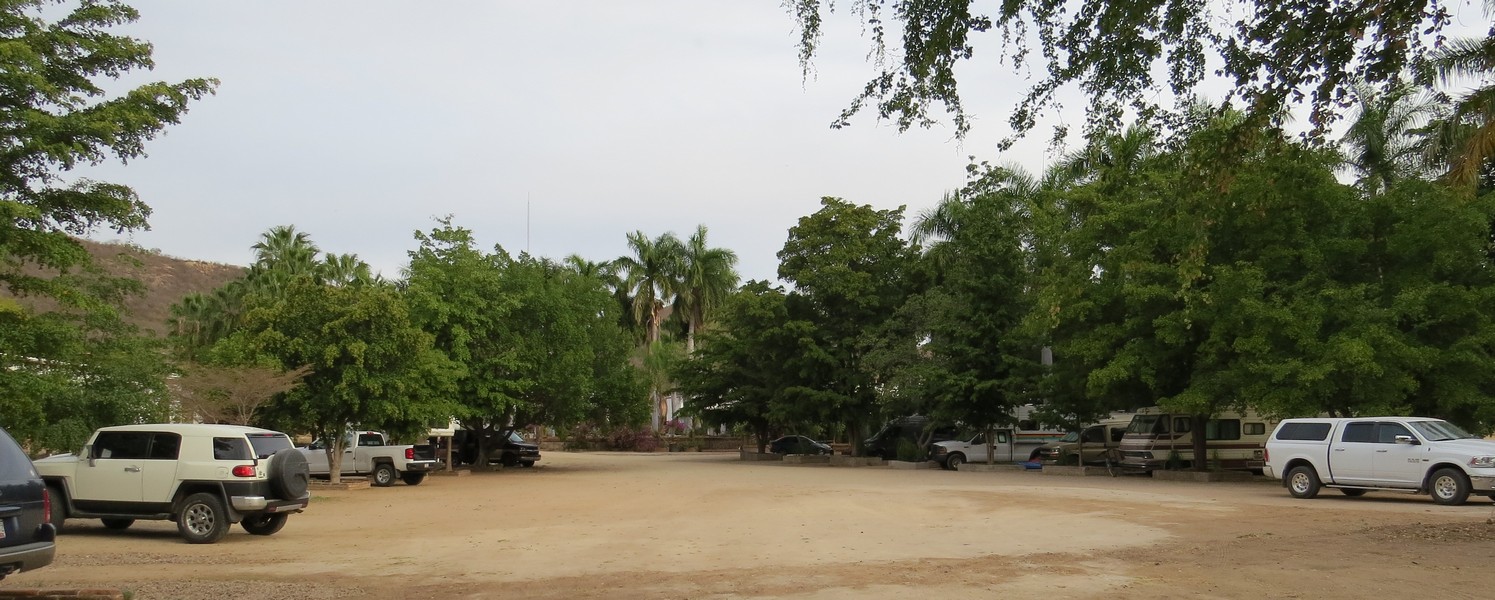
The Alamos campground attracts friendly people from all over the US and Canada. We met a lot of kindred spirits here.

One morning a group of us went out for an amazing breakfast of banana pancakes and fresh-squeezed orange juice.
(That's Mike the videographer on the right; more about him in a minute.)

Then we went hiking through the dry tropical forest, with its unusual mix of cactus and deciduous trees.

We were thrilled to watch a coati make his way along a rocky ridge.

Mike the videographer is documenting the process of making traditional Tarahumara Indian corn beer (tesguino). Here, three colors of corn have been sprouting for nine days in a bed of palm leaves.
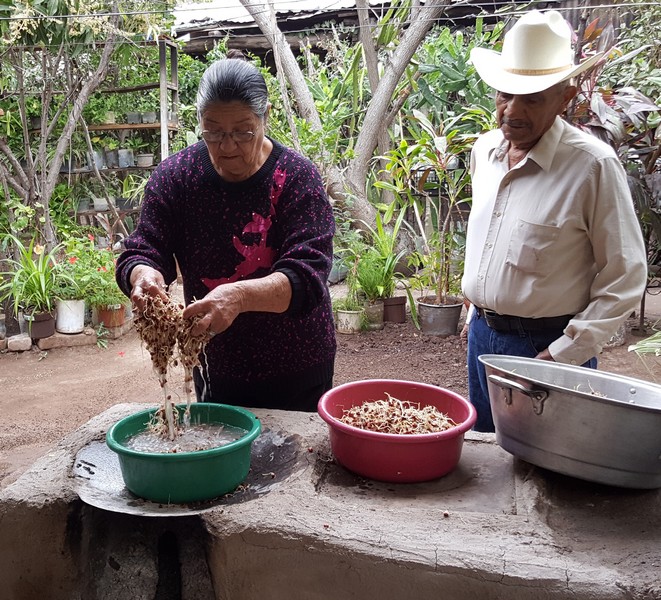
The sprouted corn is washed before grinding.
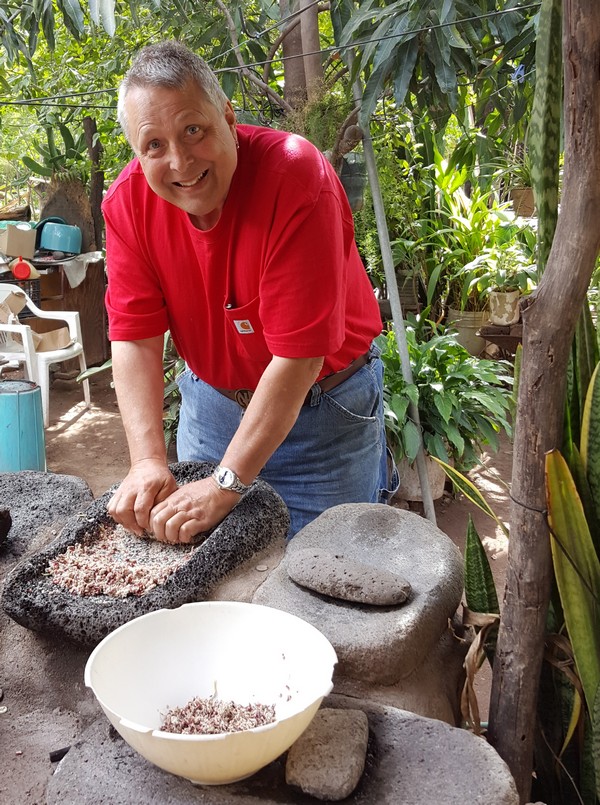
A metate is the traditional method of grinding the sprouted corn.

A hand grinder is faster than a metate. The sprouted corn mash is boiled, then fermented in clay jars. Mike's finished video will eventually be posted on this site . Meanwhile, you can check out some of his other excellent nature and culture videos.
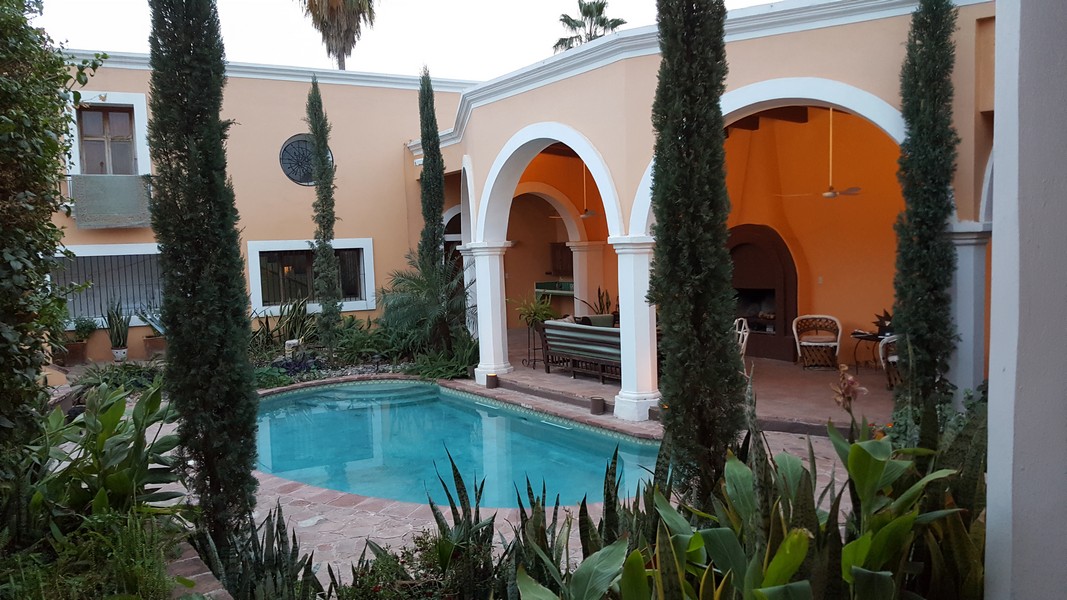
Alamos was once a prosperous silver mining town boasting Spanish-style mansions with central courtyards. Some have been restored by foreigners. We were invited to a potluck at this one.
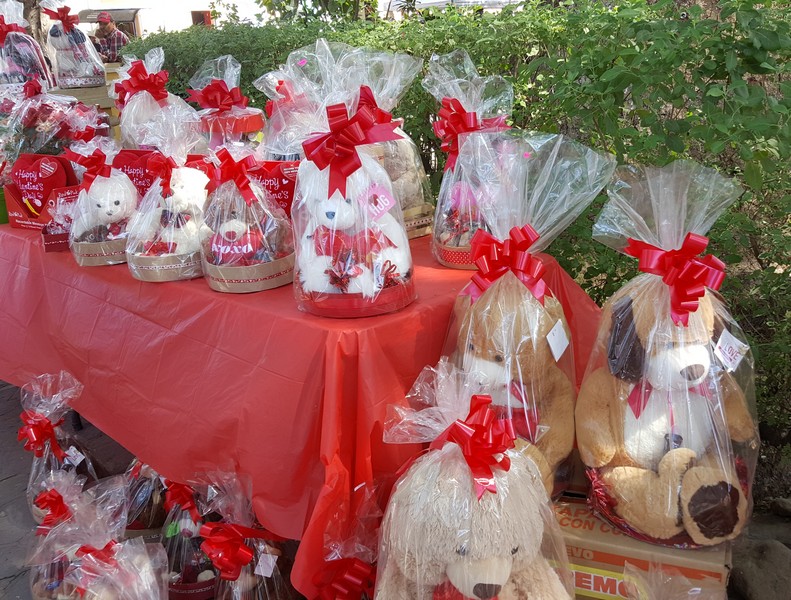
Valentine's Day is called "Friendship Day" in Mexico, and is very popular. Towns are filled with vendors selling balloons, cakes, and gift baskets.
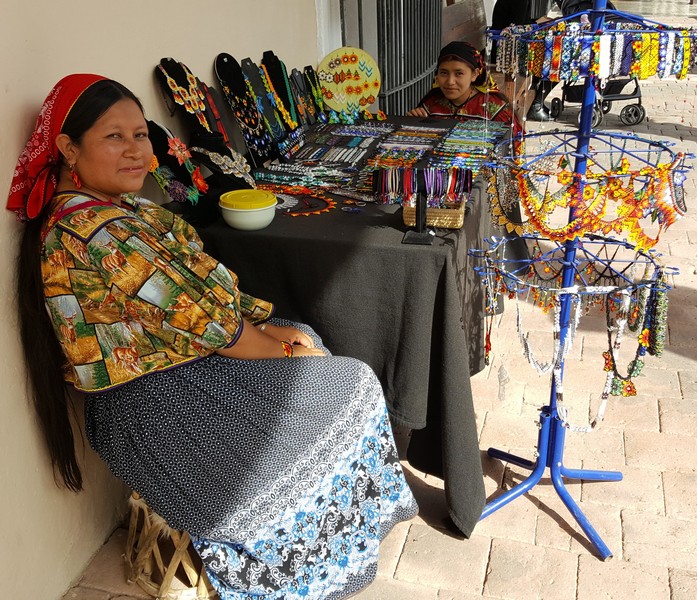
This mother and daughter do beautiful beadwork.

This necklace cost $20 and they said it took one of them a week to make.
San Carlos, Sonora
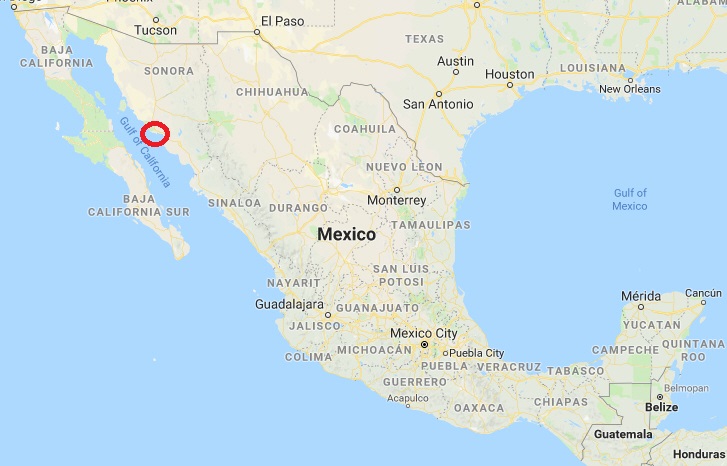

Heading north up the coast, I saw these boys on top of a train, and it gave me chills. The book "Enrique's Journey" tells the story of children who make dangerous, and often fatal, treks from Central America to the US, hoping to find the mothers who left in search of work and money to send home to their starving children. Many of these kids ride on top of trains...
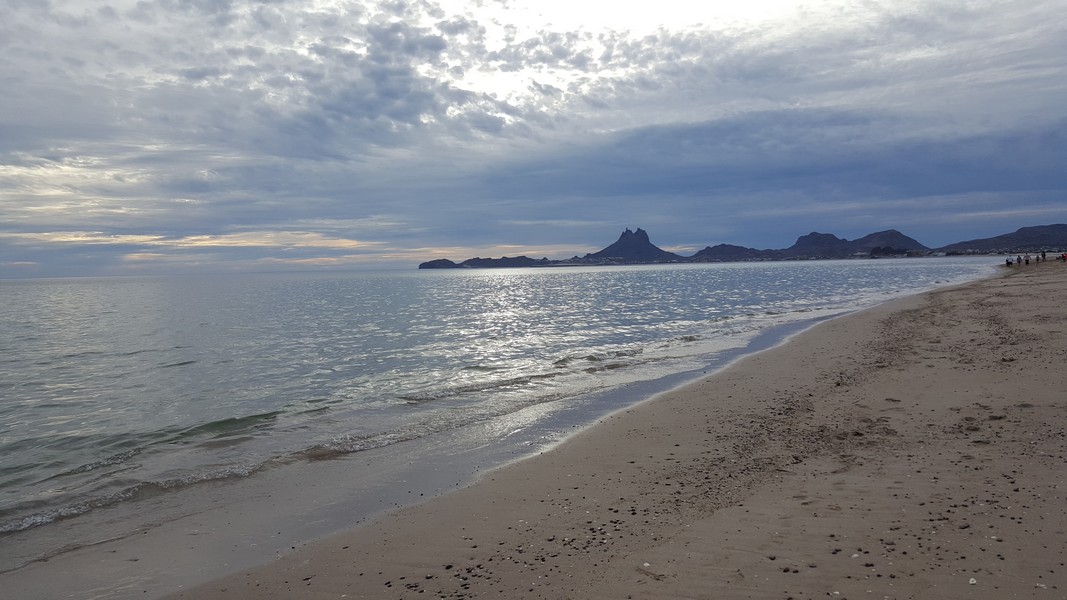
San Carlos, five hours south of the border, is a gringo enclave with miles of vacation homes. But just south of town is an undeveloped stretch of beach with camping spots.

A protected mangrove estuary supports many birds, such as this loggerhead shrike, a bird of prey only 9" long.

This kestrel falcon is not much larger than the shrike.

A pod of dolphins fishes along shore every morning. Many kayakers go out on the calm water to watch them.
Bahia de Kino, Sonora

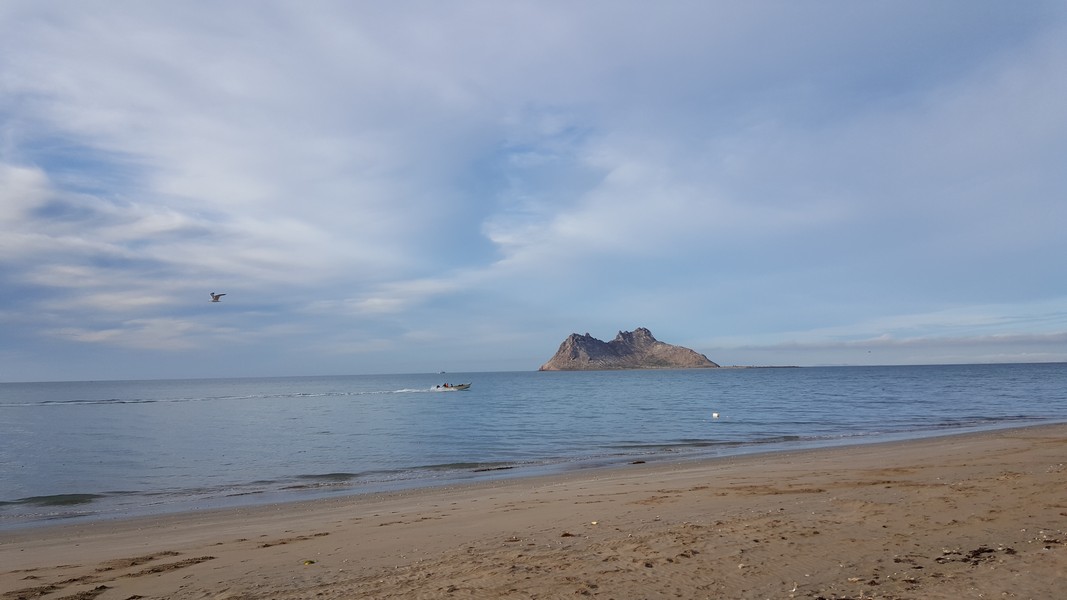
A boat heads out from Bahia de Kino, a small fishing village on the Gulf of California.

The Islandia trailer park is mostly big rigs with long-term residents. Each campground or RV park has its own unique character and type of people. This was more of a bocci ball and booze kind of place.

The dilapidated Bahia de Kino pier echoes the sense of economic decay we felt in this town.
Driving in Mexico

Toll roads are faster and in better condition than local roads, but they can be a bit pricey. (This one is 110 pesos, or about 6 dollars.)

To let someone know you want to pass them, you put on your left turn signal. They then move onto the shoulder, and you zoom past, right down the middle of the road. Oncoming traffic sees you and they move over too. It's a bit nervewracking at first, but works well to keep traffic moving safely.
Back to the US

Camping in the National Forest near Nogales

Catalina State Park in Tucson has wonderful trails.

We met up with Seattle friends Joe and Diane for a short hike.

This male great-horned owl catnapped on a branch.

Nearby, his mate guarded their as-yet-empty nest.

In Newberg, Oregon, old family friend Judy served us lunch followed by her amazing homemade apple strudel.
Trip Costs
Total cost $3400 (includes gas, food, campgrounds, supplies, Mexico insurance/visas/car permit/tolls).
Mexico only:
Car permit $46 (good for 6 months)
Tourist visas $57 ($28.50 each; good for 6 months)
Car insurance $259 (good for 6 months)
Gas, tolls, food, camping, supplies $1888 ($55/day; does not include souvenirs)
Mexico total $2250
Click here to see our other travelogues.